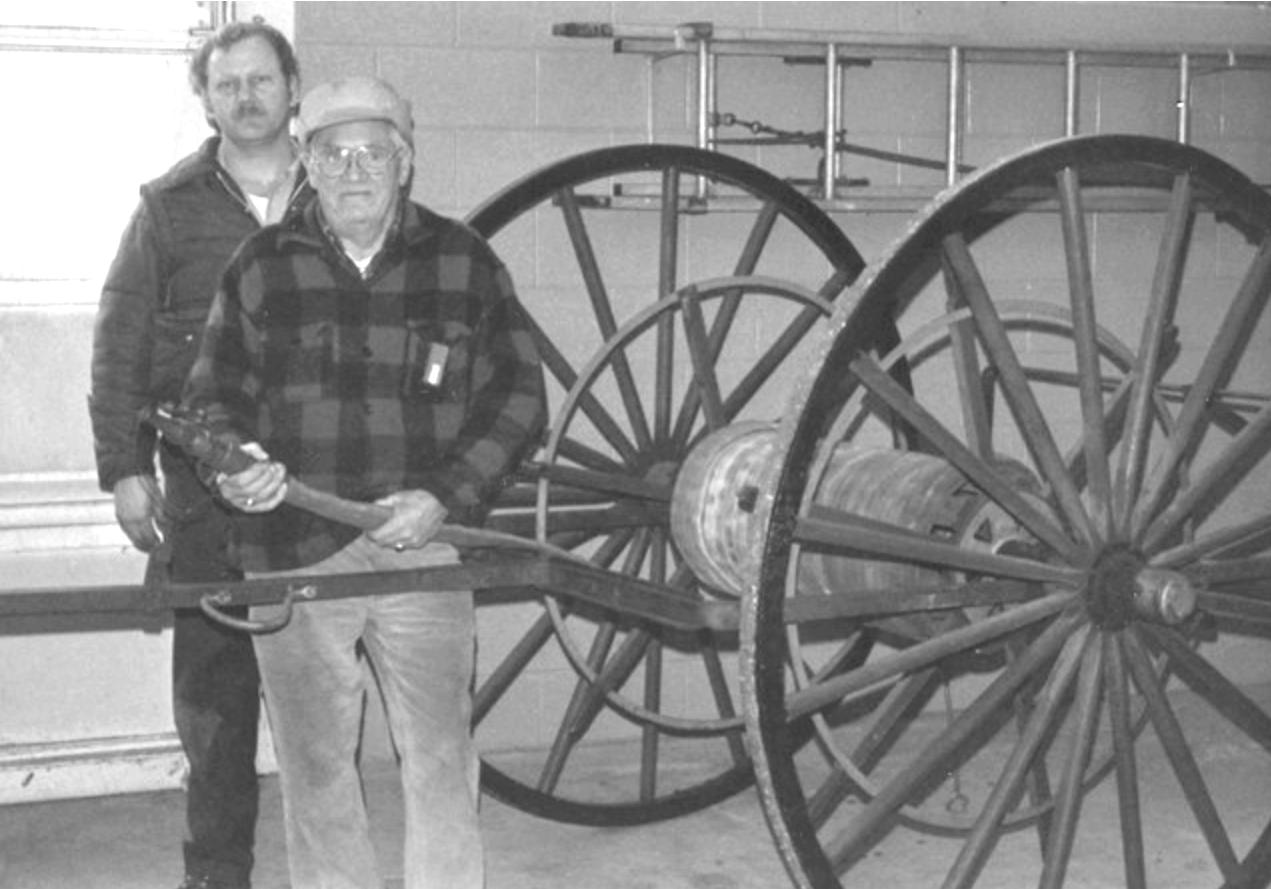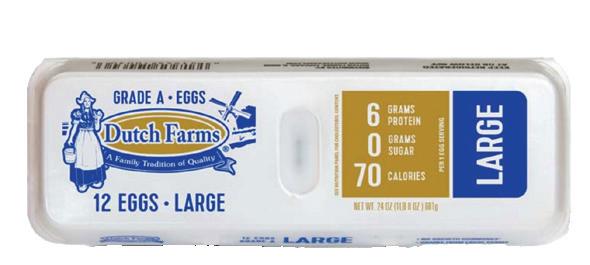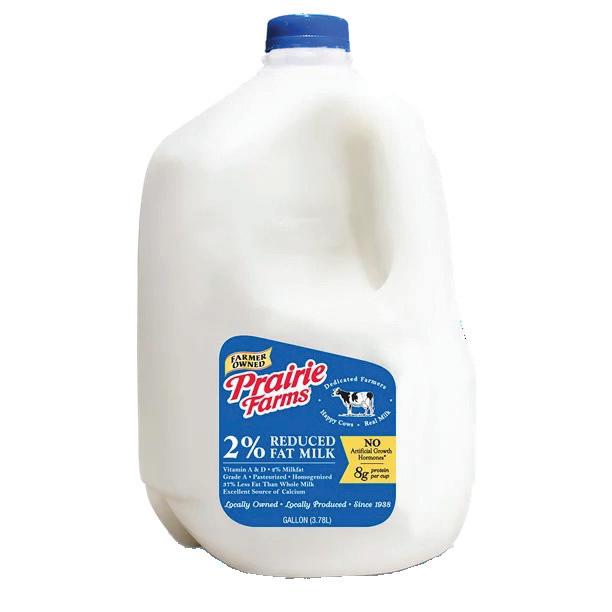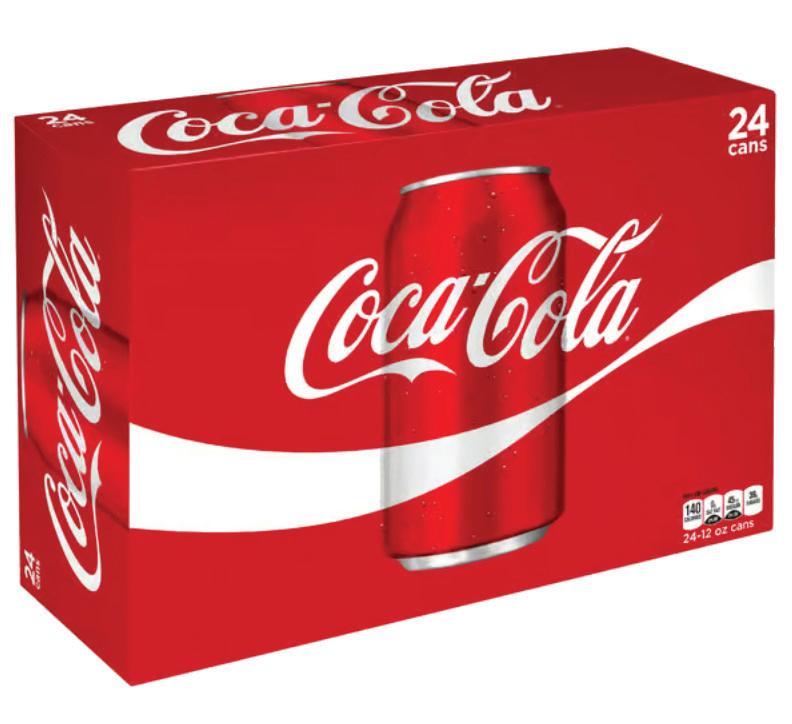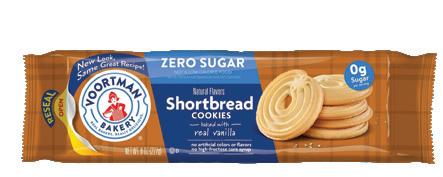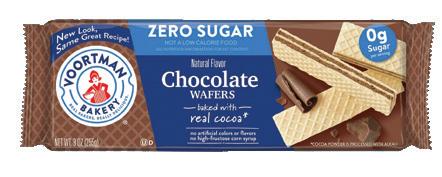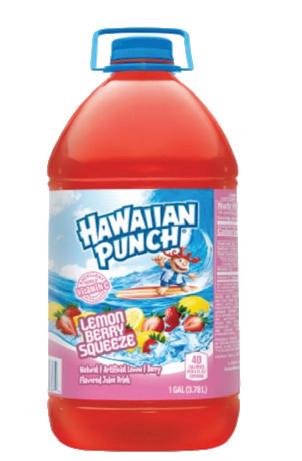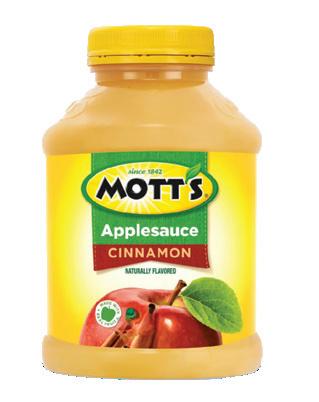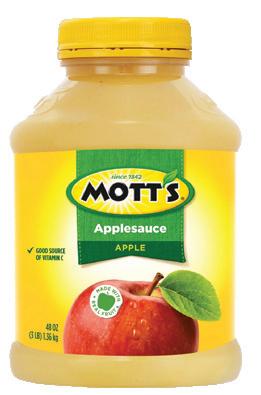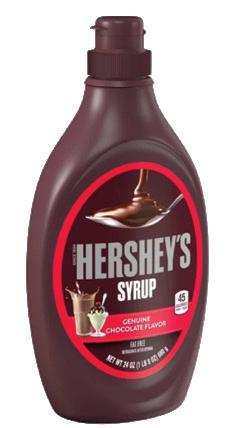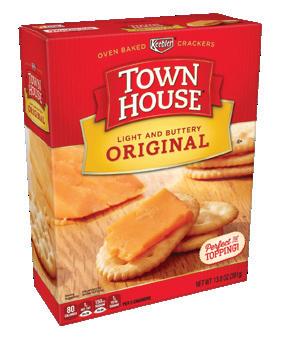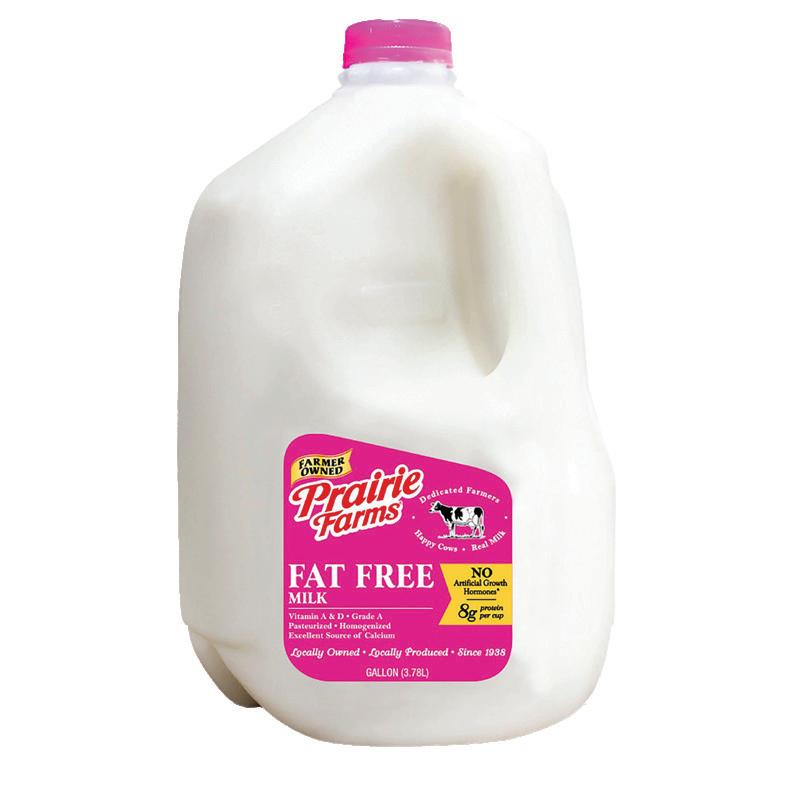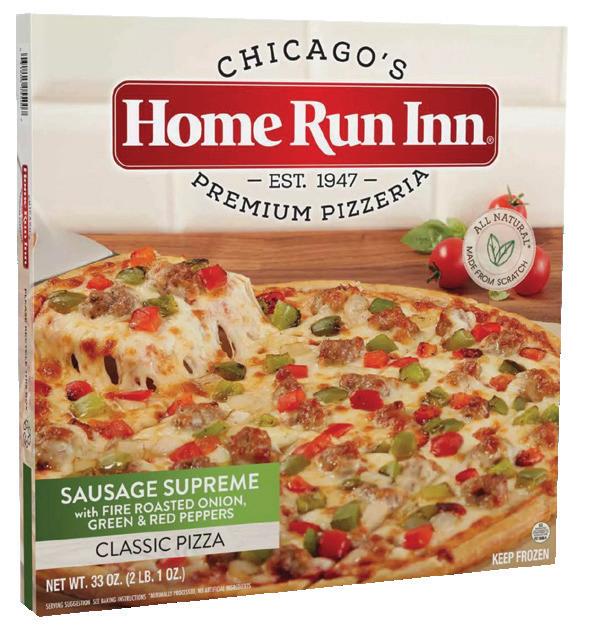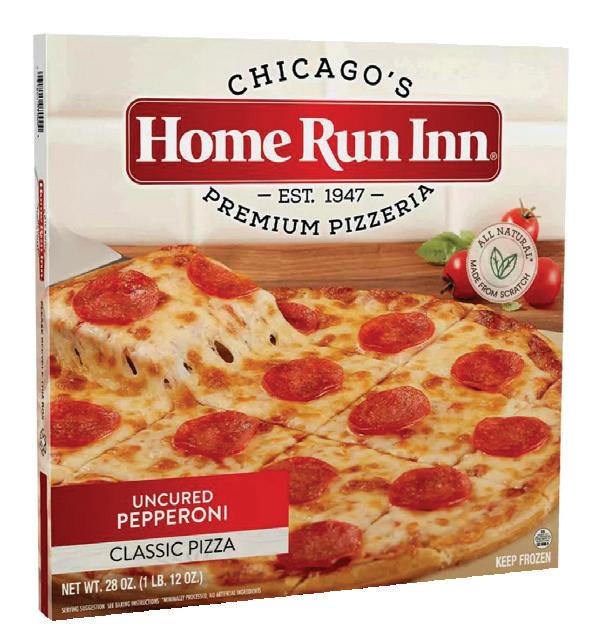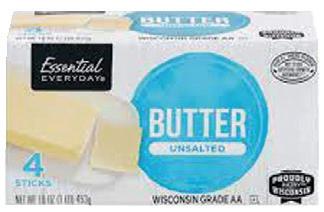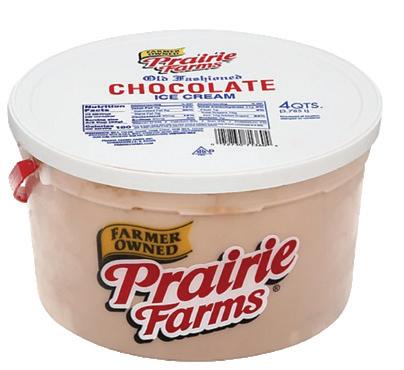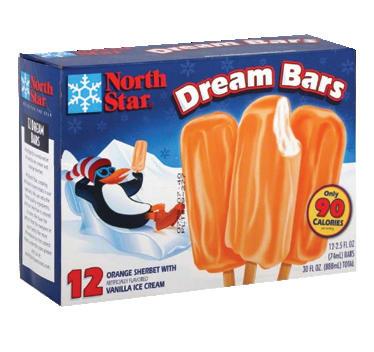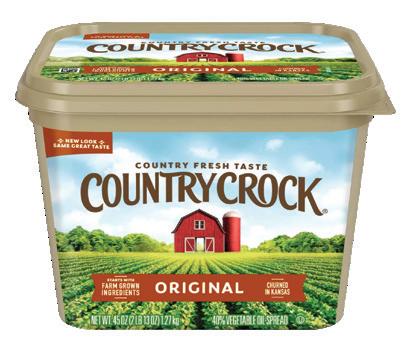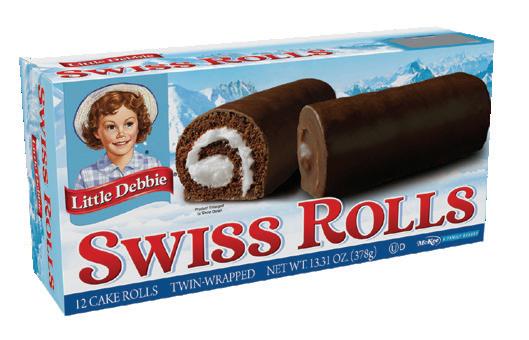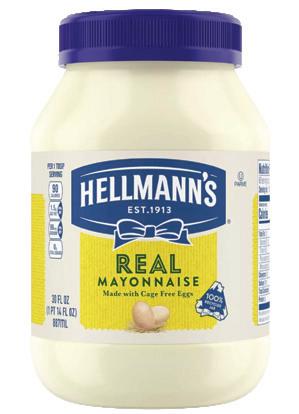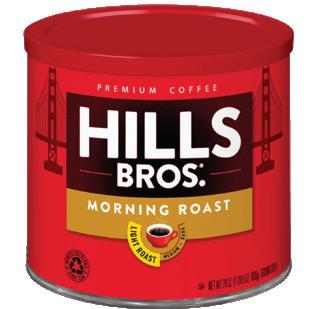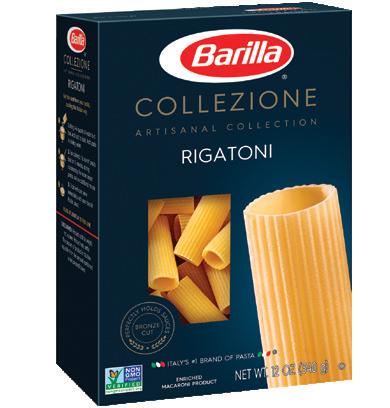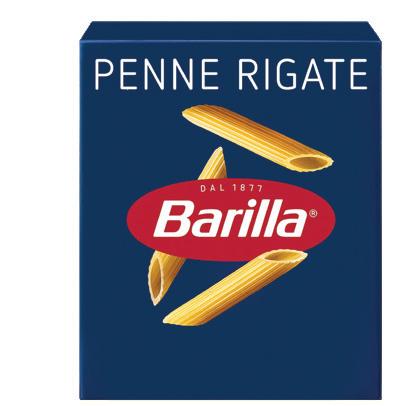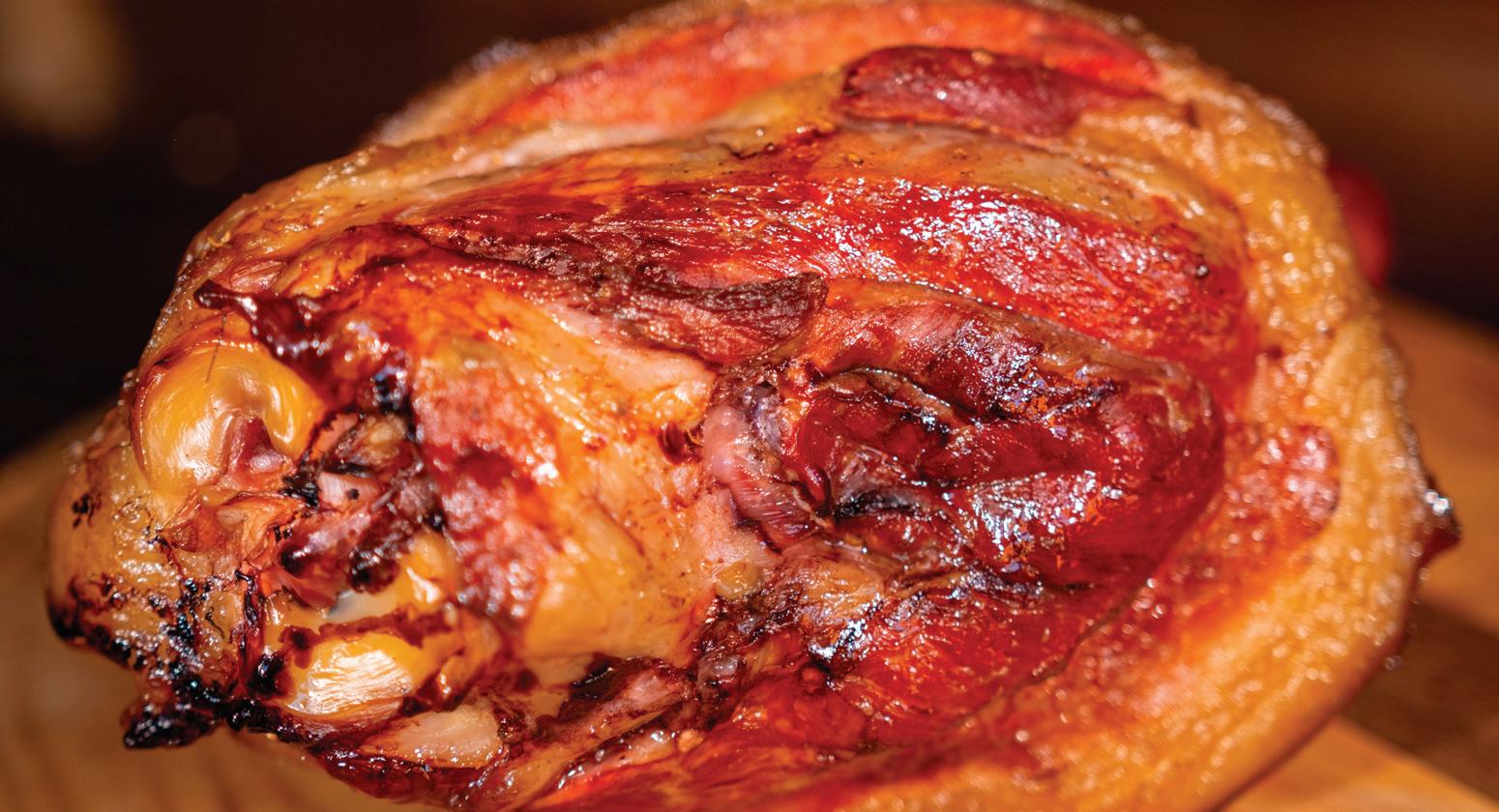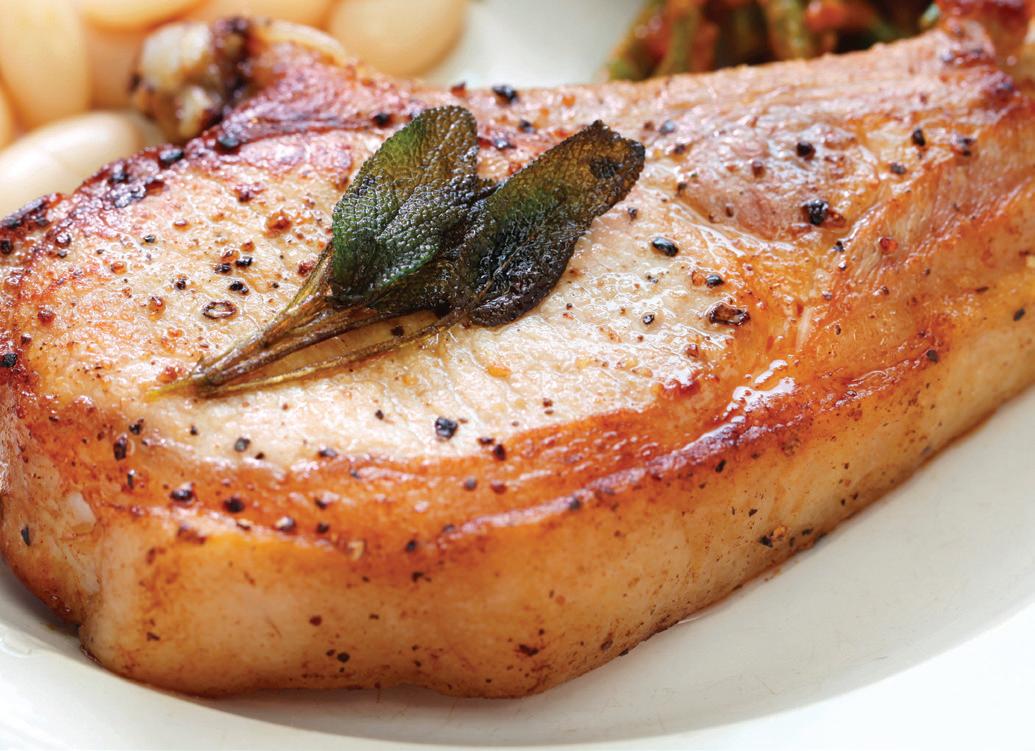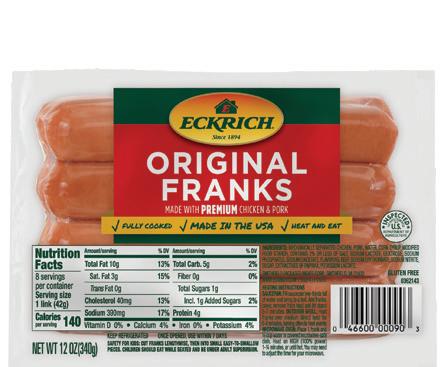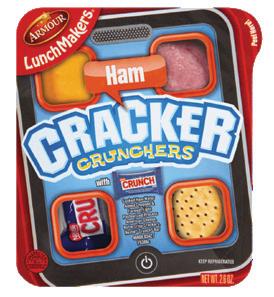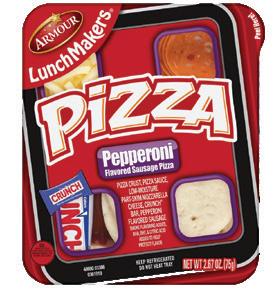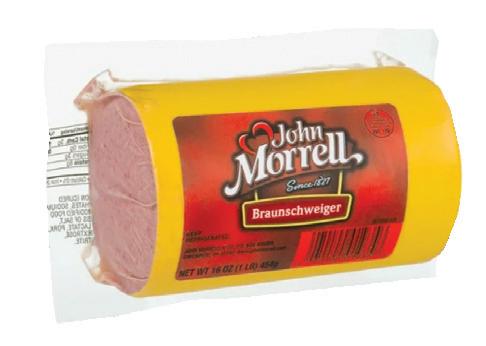






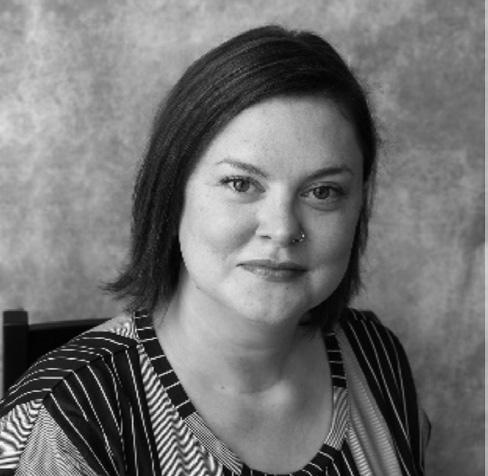
























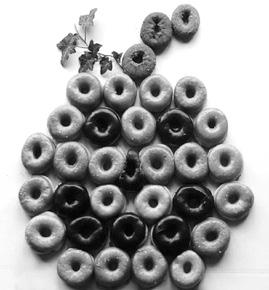

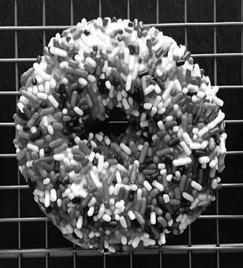


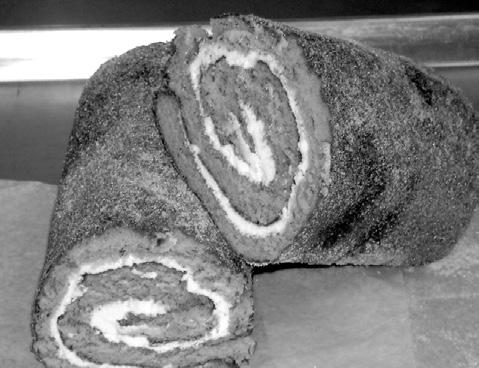

J’s SHE SHED Shop holiday sale: Oct. 11 & 12, 9-4 & Oct. 19, 8:30-3 @ 3023 W 500 S, North Judson. Cash only & no early birds! ..................................................41
FREE: 4 month old cornish bred roosters. Have red, black & blue colors with mottled plumage. 1 or 2 per family. 2607 N 125 E, Winamac, IN. Tel. 574-946-3623 David Chase ..................................................42
New & used Christmas, tools, &, items, hundreds of items 25¢ & a free pile too! Don’t miss this one!
.41-3
SINGLETON MOVING Yard Sale @ 1260 S 1000 E, Knox, 7 miles E of Knox on St. Rd 8. Oct. 8-13, 8-6. Closed if raining-reopen ASAP.
.41-4
for the Oct. 15th issue of The Market is Noon on Monday, Oct. 13th






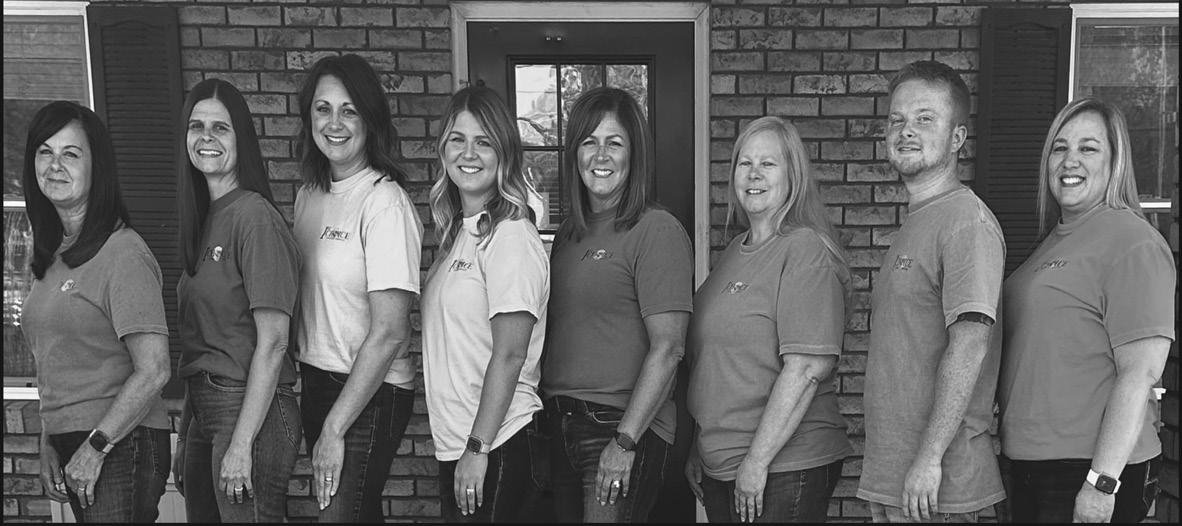
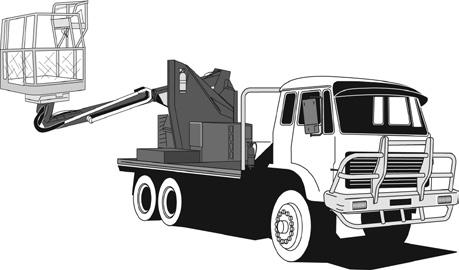




WINAMAC, IN - Roger Noble Burns, 67, died Friday, September 26, 2025 at his home. He was born January 20, 1958 in Gary, Indiana to the late Noble B. and Jeanette L. (Hardy) Burns.
Private burial was held in the Winamac Cemetery (McFarland Addition). Memorials may be made to the Winamac Cemetery.
Arrangements were made by Frain Mortuary in Winamac.
MONTEREY, IN - Paulette M. Geller, 72, died Monday, September 29, 2025 at her home. She was born April 21, 1953 in Brownsville, Pennsylvania.
Paulette was a very active person who loved playing bingo, card games, quilting, sewing, working outdoors taking care of her yard and flower garden and watching the animals. She had worked many years as a school cook, first at the Monterey Elementary School and later at Culver Community High School.
She is survived by her children: Joyce (Josh) Baugh and Kathryn (Chuck) Galbreath, both of Knox, Indiana, Linda (Jeremy) Brantley and Daniel Bendt, both of Walkerton, Indiana, one step son, Richard Geller Jr. of Ober, Indiana several grandchildren and great grandchildren, two sisters: Ruth Ann Butala of Portage, Indiana and Judy Paradis of Culver, Indiana and one brother, Donald Striker of Valparaiso, Indiana. She was preceded in death by her husband, Richard Geller Sr., her parents, Paul and Dorothy Striker and one sister, Barbara Sholes.
Services were held Thursday, October 2 at M.C. Smith Funeral Home. Burial was in the Eagle Creek Cemetery in Knox. If you would like to, plant a tree in her memory to replace any lost in recent wildfires.
Arrangements were made by M.C. Smith Funeral Home in Knox.
FRANCESVILLE, IN - Gregory C. Stone, 75 died Wednesday, September 24, 2025 at his home. He was born February 2, 1950 to the late Forrest and Gwendolyn (Cook) Stone. On November 20, 1976 he married Karen Will. Greg was a graduate of West Central High School. He attended some college but decided he wanted to be a truck driver. He was also a farmer and served as council member and later as town council president for the Town of Francesville. He then went on to be the town’s water superintendent until his retirement. He also served on the Salem township advisory board until his death. He enjoyed time on the lake, either fishing or on his speed boat, golfing and watching his friends race cars. Greg was a member of the United Methodist Church and the Lions Club. He also volunteered with the Starke/Pulaski Habitat for Humanity.
He is survived by his wife, Karen, one son, Nathaniel (Kristen Kemper) Stone, one daughter, Angela (Kevin) Todd, one grandson and two brothers: Gary (Trudy) Stone and Mike (Lisa) Stone.
Donations in memory of Greg can be made to the Starke/Pulaski habitat for Humanity or to Karen Stone for the Francesville Park fountain.
Arrangements were made by O’Donnell Funeral Home, Inc. in North Judson, Indiana.
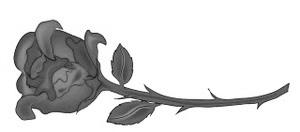
FRANCESVILLE, IN - FORMERLY OF NORTH JUDSON, IN - Betty May Lyon Whitenack, 97, died Thursday, September 25, 2025 at Parkview Haven in Francesville, Indiana. She was born August 28, 1928 just outside of Patriot, Switzerland County, Indiana to the late Worth and Edith (Bunger) Lyon. On August 2, 1947, she married John R. Whitenack.
Betty was a devoted wife and mother. She was an artist, a piano player and gave free lessons to kids who couldn’t afford to play otherwise, a published writer, an English substitute teacher for her husband. She loved researching and was always studying. She was an active member of her church.
She is survived by her five children: Jane (Leroy) Clemons, John Robert “Bob” (Donna) Whitenack, Julie (Gary) Griffin, David (Sandy) Whitenack and Richard (Gail) Whitenack, twelve grandchildren and thirty four great grandchildren. She was preceded in death by her husband, John, two granddaughters: Kathy Whitenack and Jenny Clemons Jones and two brothers: Lowell (Junior) and Howard Lyon. Services were held Sunday, September 28, at O’Donnell Funeral Home. Burial was in the Highland Cemetery in North Judson. Memorials may be made to the Gary Sinise Foundation. Arrangements were made by O’Donnell Funeral Home, Inc. in North Judson.
The Lord’s Prayer
Our Father who art in Heaven, hallowed be thy name, thy kingdom come, thy will be done, on earth as it is in Heaven. Give us this day our daily bread. Forgive us our trespasses as we forgive those who trespass against us. Lead us not into temptation but deliver us from evil. For the kingdom, the power, and the glory are yours now and forever. Amen.

Join Us For The 2025 Public Square Rosary Rally Sat., Oct. 11 12 Noon
The Gazebo at Norwayne Field in North Judson

The hardest goodbyes are the ones you don’t see coming. The ones you don’t plan or could never imagine happening.
Happy B-day Friend~ Oct. 11th
Area shoppers know the Classifieds are the purr-fect place to find a bargain. In the Classifieds, you can track down deals on everything from collectibles to cuddly kittens. It’s easy to place an ad or find the items you want and it’s used by hundreds of area shoppers every day.
Classifieds over 25 words add 10¢ per word. Place border around classified add $2.00. No border on garage sales. Payment must accompany classified. DEADLINE NOON MONDAY before publication. Send to: The Market, P.O. Box 218, No. Judson, IN. 46366





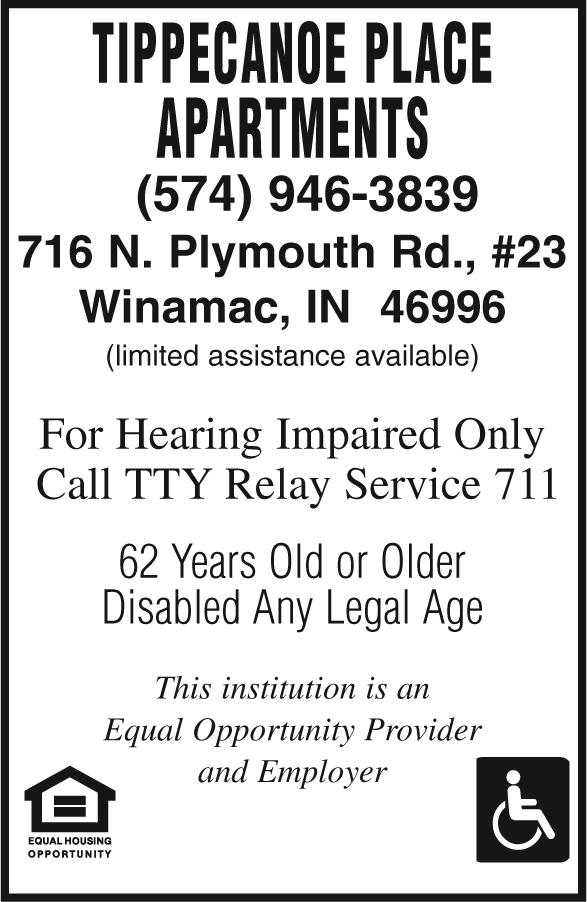
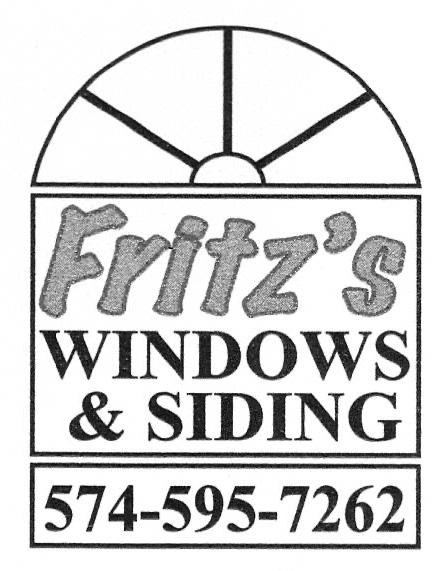





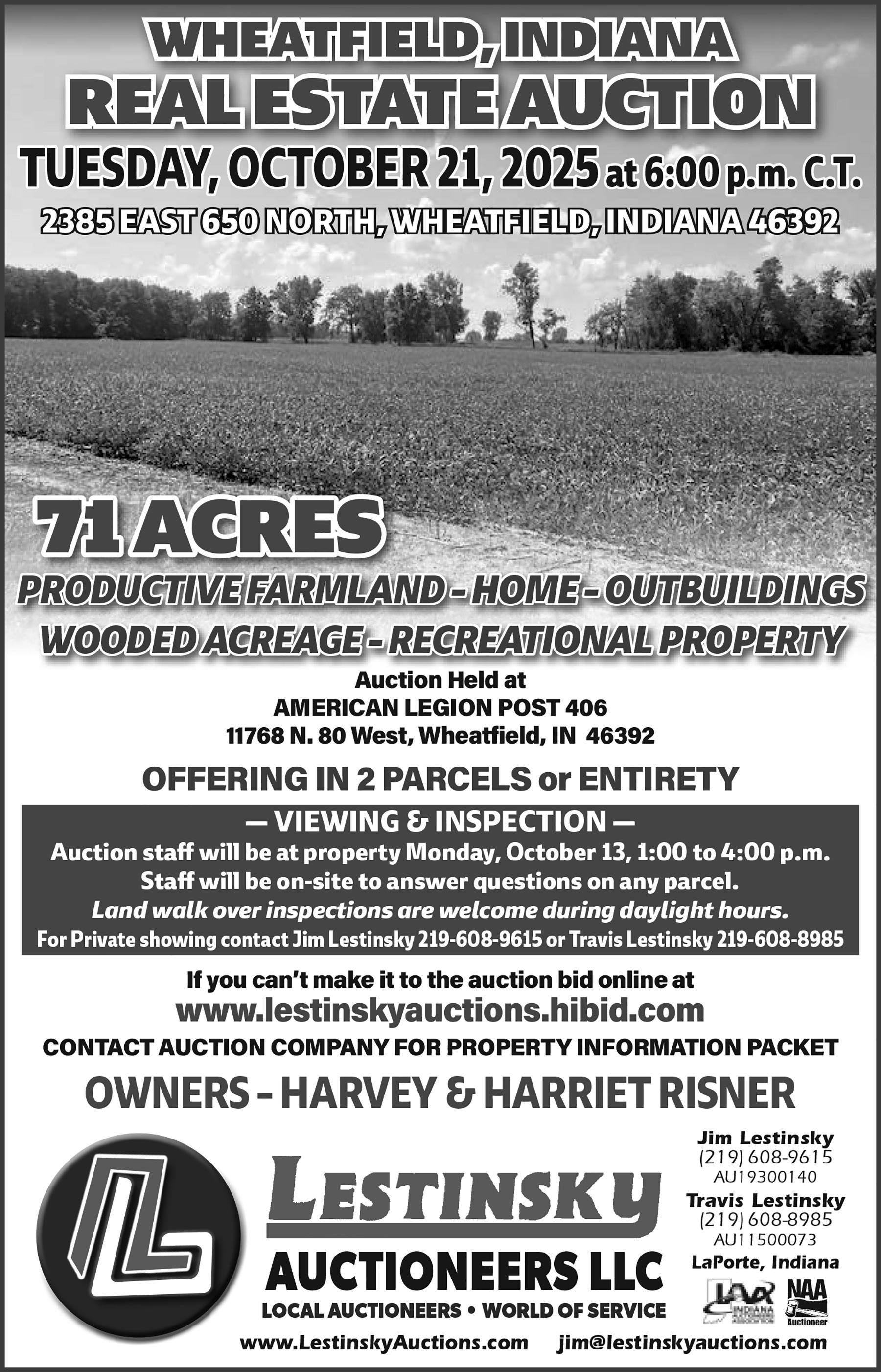




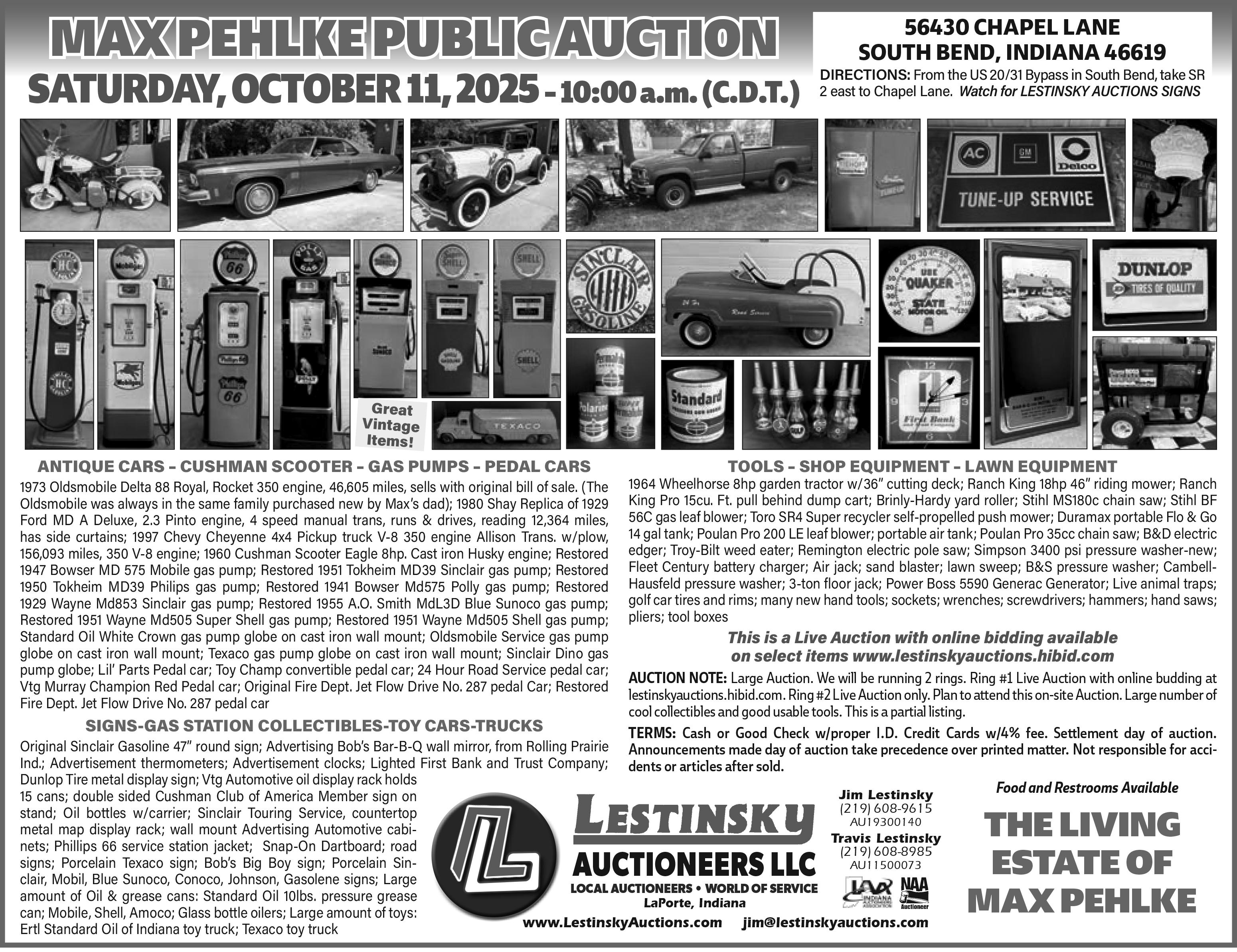









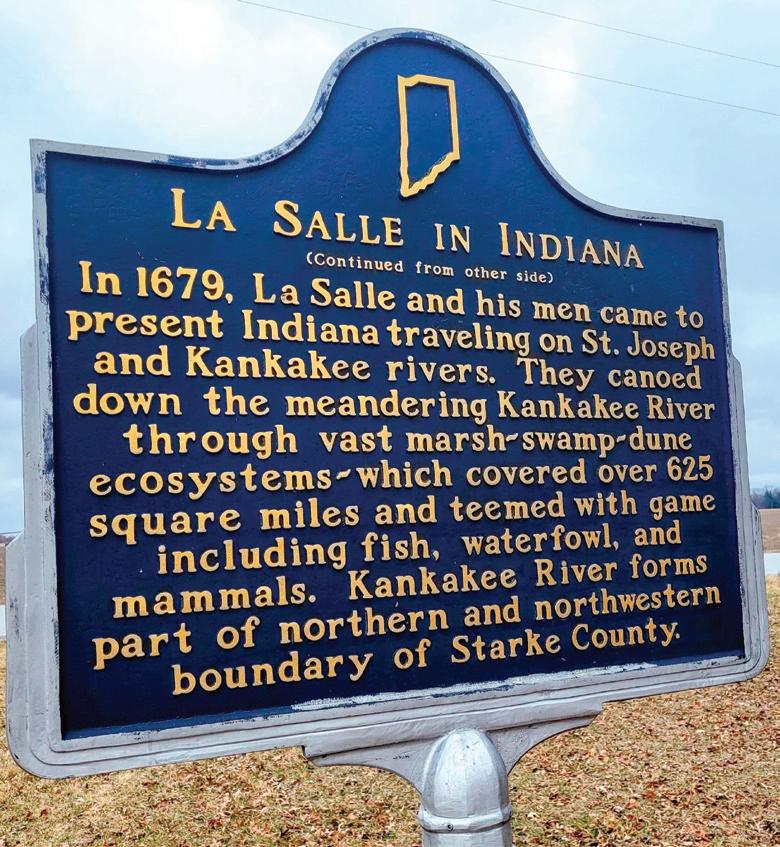
Explorer Robert de La Salle heard of a great river which flowed into the sea. Believing that sea to be the Pacific, he began to plan for expeditions to find a western passage to China. La Salle and his men travelled to Niagara where, in December 1678, they were the first Europeans documented to have seen Niagara Falls. La Salle and his men continued across the Great Lakes to Lake Michigan. There, they traveled in canoes down the western shore of the lake, rounding the southern end to the mouth of the St. Joseph River, where they built a stockade in November 1679. They called it Fort Miami (now known as St. Joseph, Michigan).
On December 3, 1679, La Salle and his men headed south from Fort Miami. They canoed up the St. Joseph and followed it to a portage at presentday South Bend, Indiana. They then crossed to the Kankakee River, passing by what would be Starke County. They followed the Kankakee to the Illinois River. By January 1680, they reached an area that is near the current city of Peoria, Illinois.
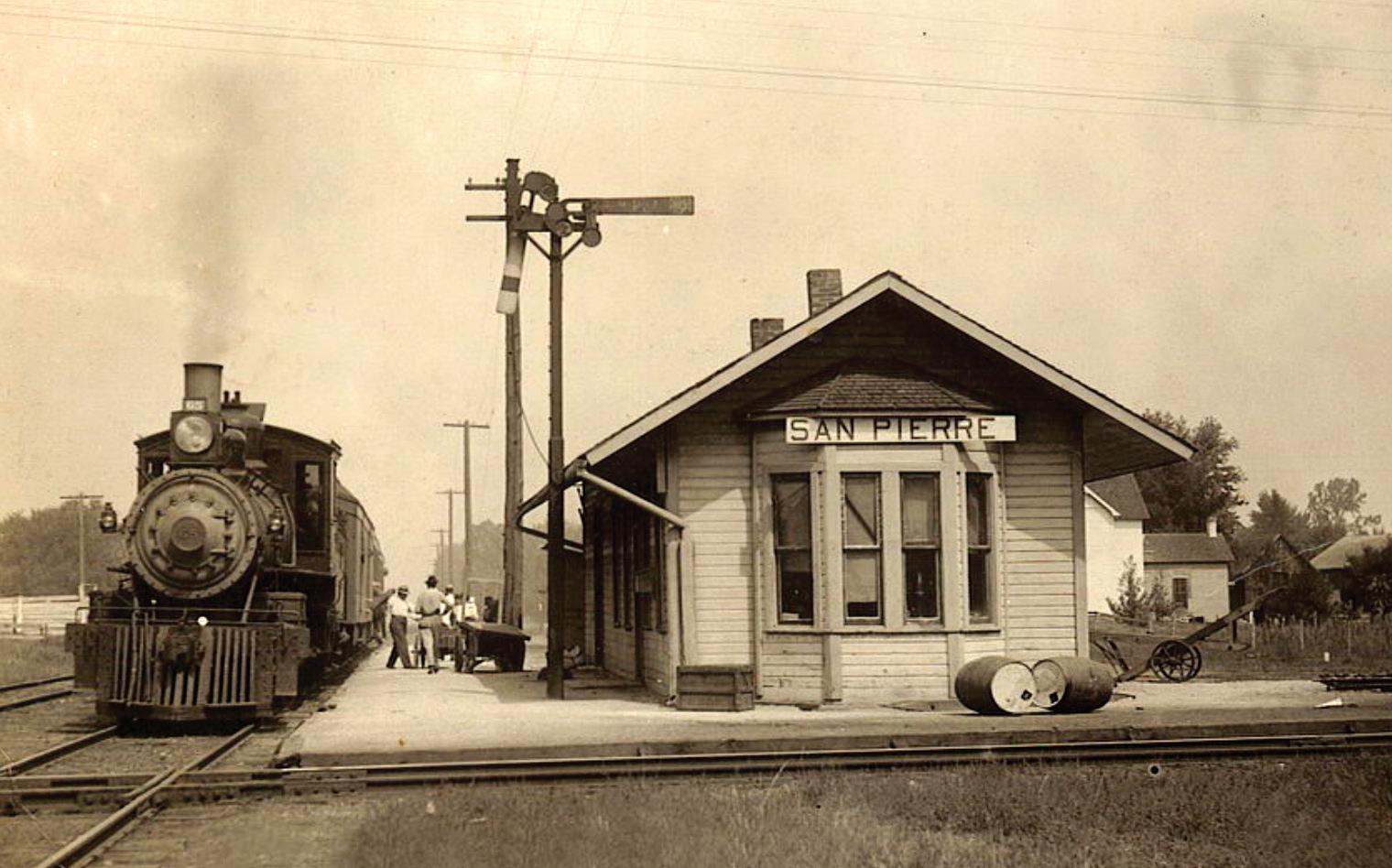
Railroad Township was home to the first railroad in our county. In either 1852 or 1853, the New Albany and Salem Railroad (NA&S) built the first tracks through Starke County, running north and south. In 1854, a village called Culvertown was laid out along the train’s path. (The next year the name of the village was changed to San Pierre.)
In 1859, the NA&S was renamed the
On July 1, 1897, the Louisville,
and Chicago was reorganized as the Chicago, Indianapolis, and Louisville
(CI&L). However, the railroad was often known as the Monon and on January 11, 1956, the CI&L officially adopted its longtime nickname, Monon, as its corporate title.

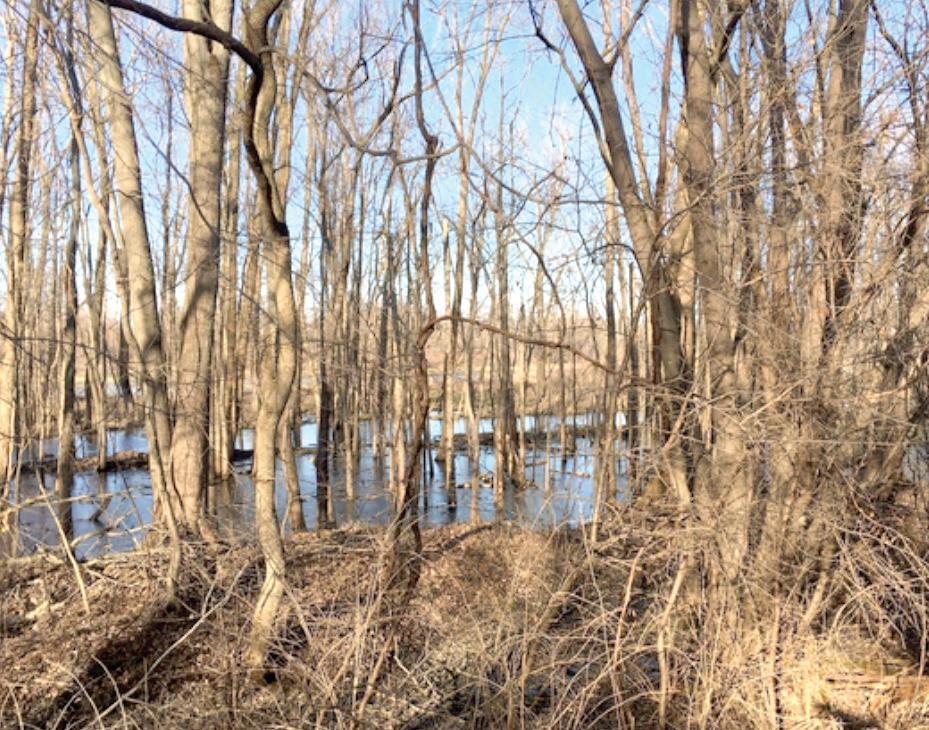
When early settlers came to Starke County, most of the land was covered with water…part of the Grand Kankakee Marsh. The marsh is one reason why Starke County was one of the last areas in Indiana to be settled. The timber lands were called islands when the county was first settled. Much of the year water surrounded these groves of timber.
The higher sand hills, which rose above the surrounding swampy land, had names such as White Woman’s Island, Lone Tree Island and Green Island. Early settlers talked of rowing boats from places like Brems and Hamlet to Knox.
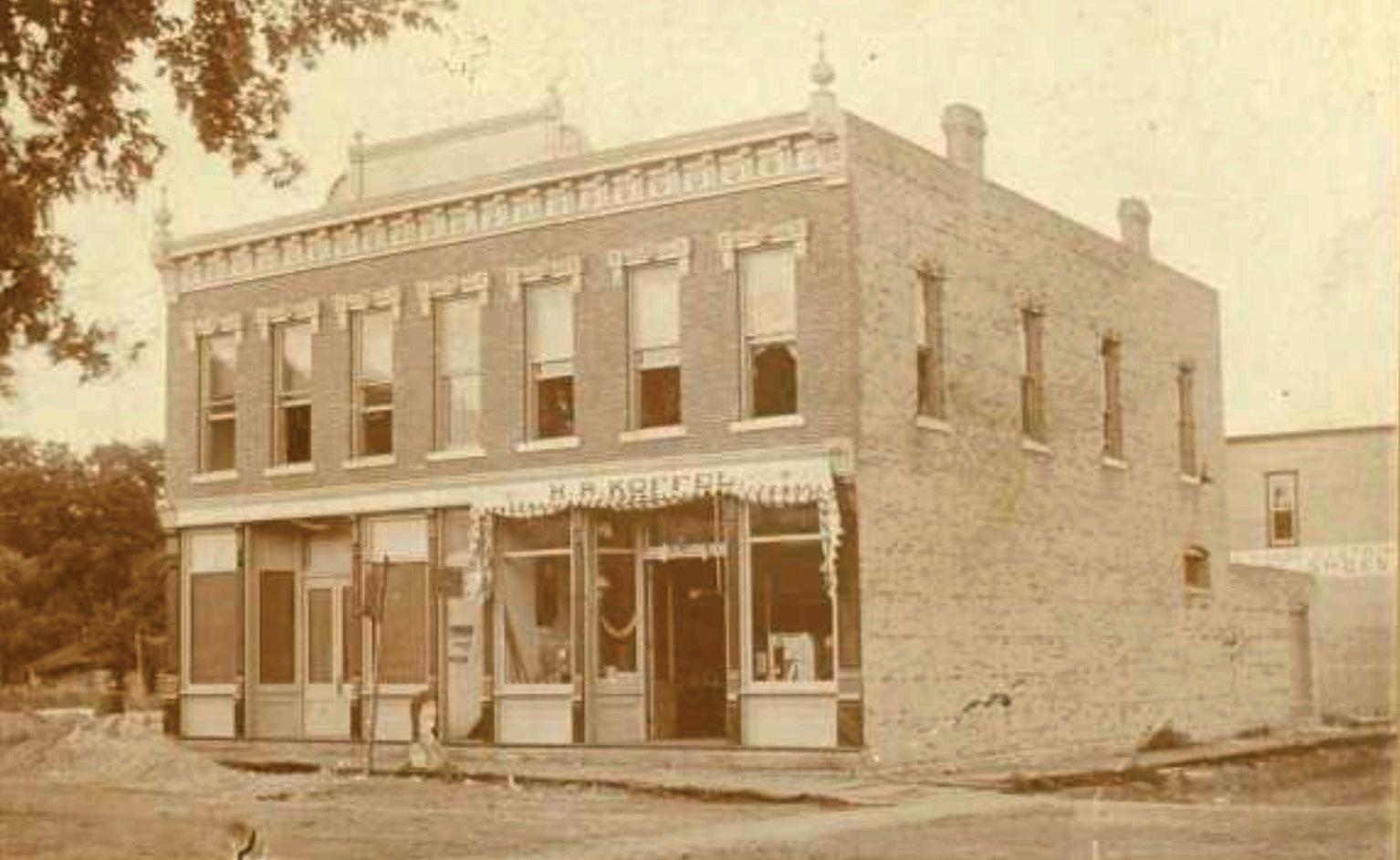
The building housing Koffel’s Drug Store (also known as Model Pharmacy) was built in 1891 at the northeast corner of Lake and Main Streets in downtown Knox by Herbert A. Koffel. At the time of this photo, it stood alone at this corner. The street is not yet paved with brick and a pile of sand is left from construction. In 1892, the brick streets were laid and wooden sidewalks replaced with concrete.
The Citizen’s Bank occupied the lower left side of the building the 1890’s. There were offices upstairs, one of which was used by Dr. Steven Brown, Henry Schricker’s father- in-law.
Koffel’s soda fountain counter was a popular place where town residents met and discussed the day’s events. Luther Evert purchased the store from the Koffels around 1939. After more than 75 busy years, the drug store finally closed in the early 1970’s, and the building was razed in 2013.
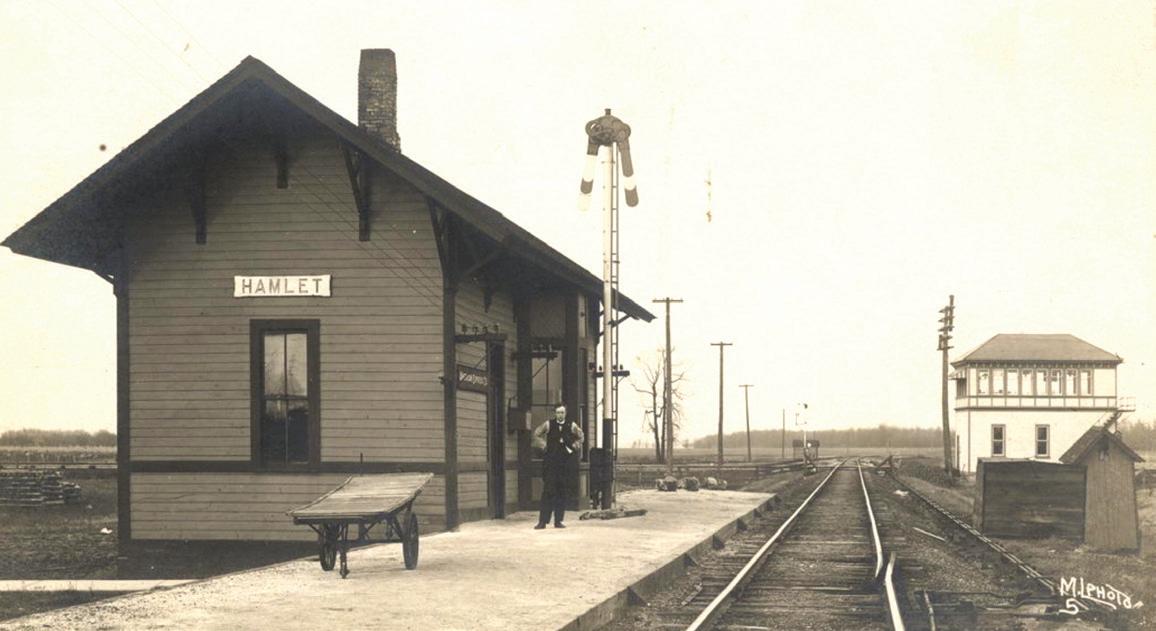
Explorer Robert de La Salle heard of a great river which flowed into the sea. Believing that sea to be the Pacific, he began to plan for expeditions to La Salle and his men travelled to Niagara where, in December 1678, they were the first Europeans documented to have seen Niagara Falls. La Salle and his men continued across the Great Lakes to Lake Michigan. There, they traveled in canoes down the western shore of the lake, rounding theade in November 1679. They called it Fort Miami (now known as St. Joseph,
day South Bend, Indiana. They then crossed to the Kankakee River, passing by what would be Starke County. They followed the Kankakee to the Illinois River. By January 1680, they reached an area that is near the current city of Peoria, Illinois.
The Indiana, Illinois, and Iowa (also known as the 3I or II&I) railroad was planned beginning in the 1870’ s, although it was not completed through Starke County until around 1895. This is the railroad that connected towns across the county - San Pierre, North Judson, Knox, Hamlet. In 1906, the Indiana, Illinois, and Iowa was merged with the Indiana Harbor Railroad to create the Chicago, Indiana, and Southern (CI&S). During a storm in late May, 1911, the CI&S depot at Hamlet was struck by lightning and burned to the ground. There were several people in the depot when it was struck, but the fire was not noticed until one end of the building was actively burning. The alarm was turned in at once, but the fire had such a start that the fire company had all it could do to keep the nearby Dye Lumber Company from catching fire. The people who were awaiting a train were forced out into the storm, but no one was hurt.





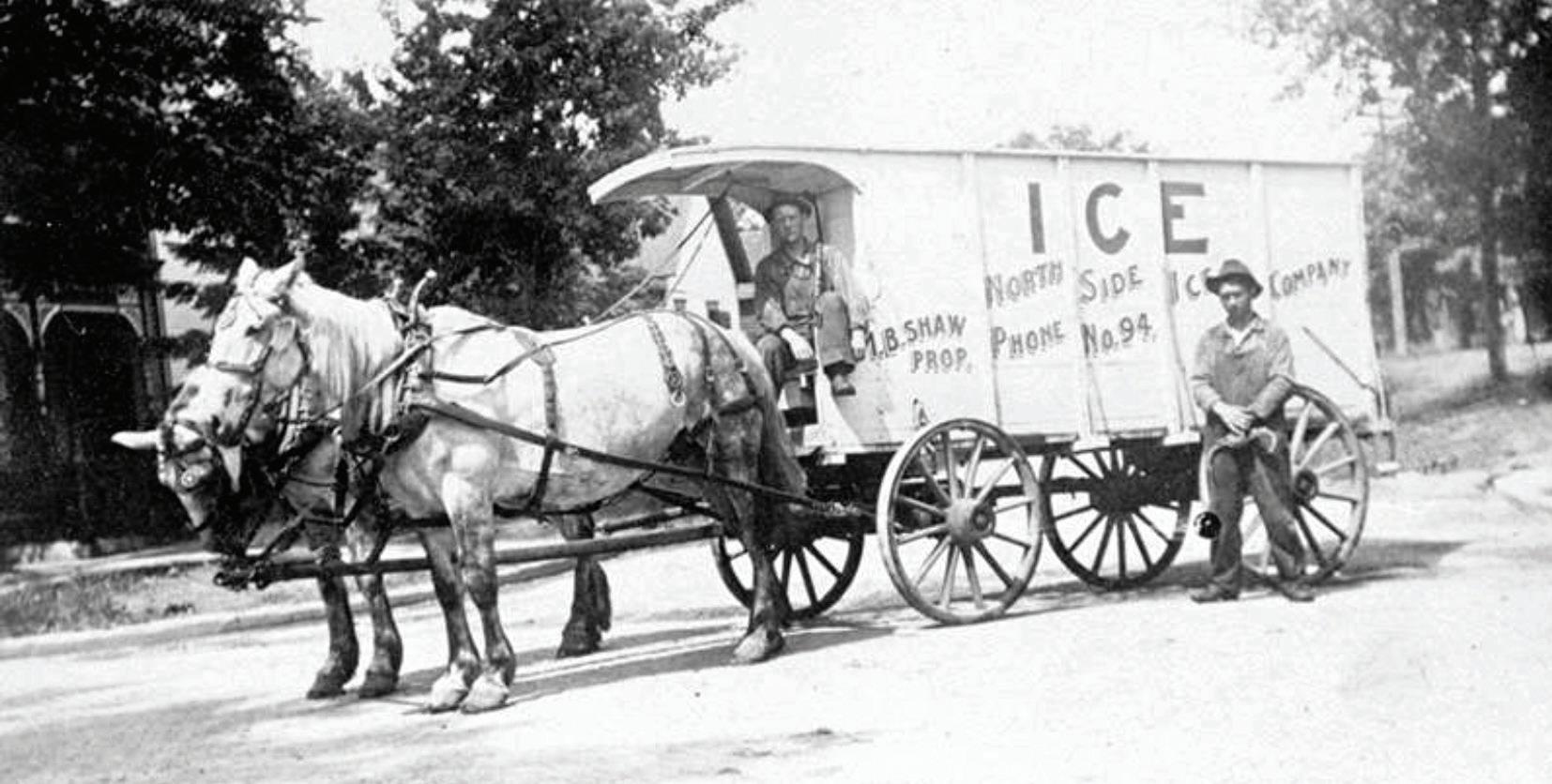
Before the days of refrigeration, ice making and distribution was an important local industry. This photo shows William B. Shaw’s horse drawn ice delivery wagon and is dated around 1900.
Much of Shaw’s ice was cut from the Yellow River bayous located just north of Knox. Special hand saws were used to cut the ice into blocks while still frozen on top of the water. It was a dangerous undertaking.
Delivery wagons, such as Shaw’s, made the daily rounds around town. A large block of ice might last 3 days or so in a home “ice box”. Later William Shaw added coal to his home delivery service.
William’s parents, Joseph and Abigail Shaw were among the earliest settlers in Starke County, locating here from Ohio in the 1850’s in North Bend Twp.
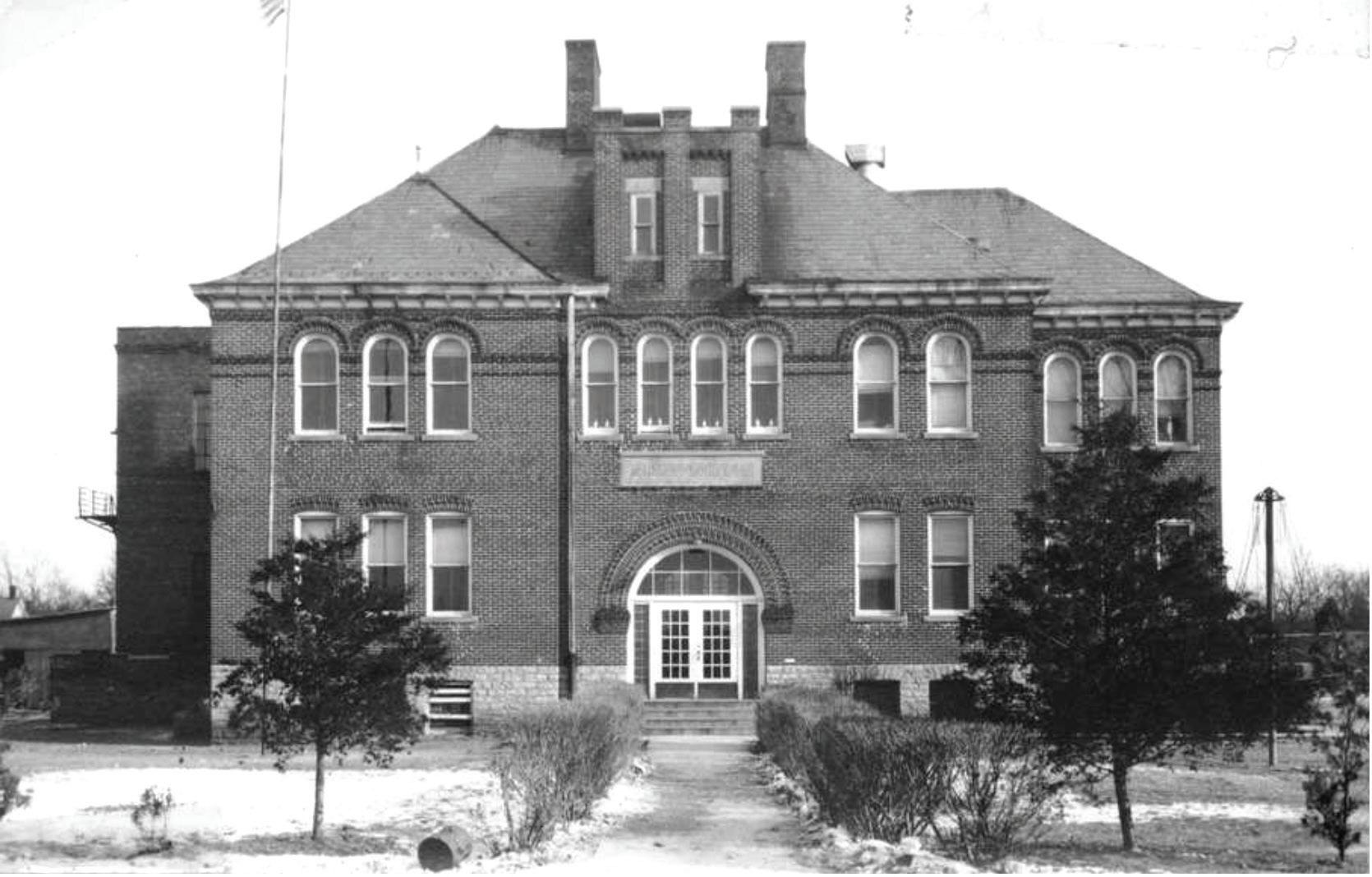
The Hamlet School was built in 1900 on the east side of South Main Street. In 1925, a gymnasium was added. It is interesting to note that Knox, North Judson and San Pierre schools also added gymnasiums about the same time.
Oregon Township was one of the first townships in Starke County to consolidate its schools. Seven one-room schools (Koontz, Oregon, Fletcher/ Reid, Gunzenhouser/Uncapher, Holderman and Haley/Fuller/Harness) were replaced with this new school in 1900.
The elementary grades were split out in 1953 when a new building was built for them. In 1964, Hamlet was consolidated into the Oregon-Davis School Corporation. The high school students then went to the former Grovertown HS until 1971. Grades 7-8 from both Oregon & Davis Townships attended school in this building. After the Oregon-Davis high school building opened in 1971, this building was demolished.
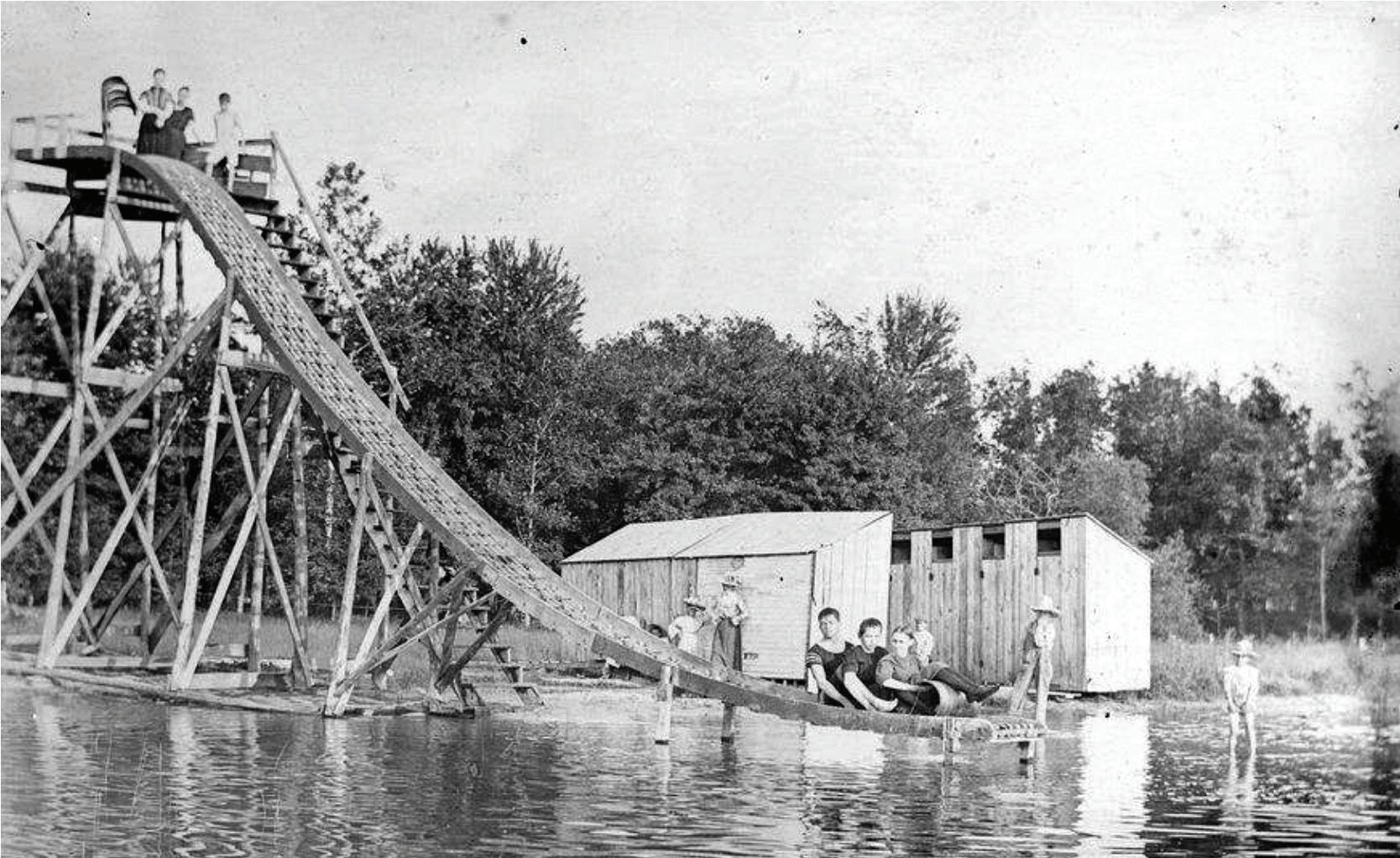

Back in 1904, there were seven of these huge machines working on rerouting the Kankakee River in Starke County. They varied in size. Some required as many as ten men. Most employed a cook, as the men lived and stayed on the dredge boat. A local newspaper article tells of the men losing even their Sunday clothes when one caught fire. One of the dredge owners built a hotel boat for the men that followed the dredge. Over 100 years ago,
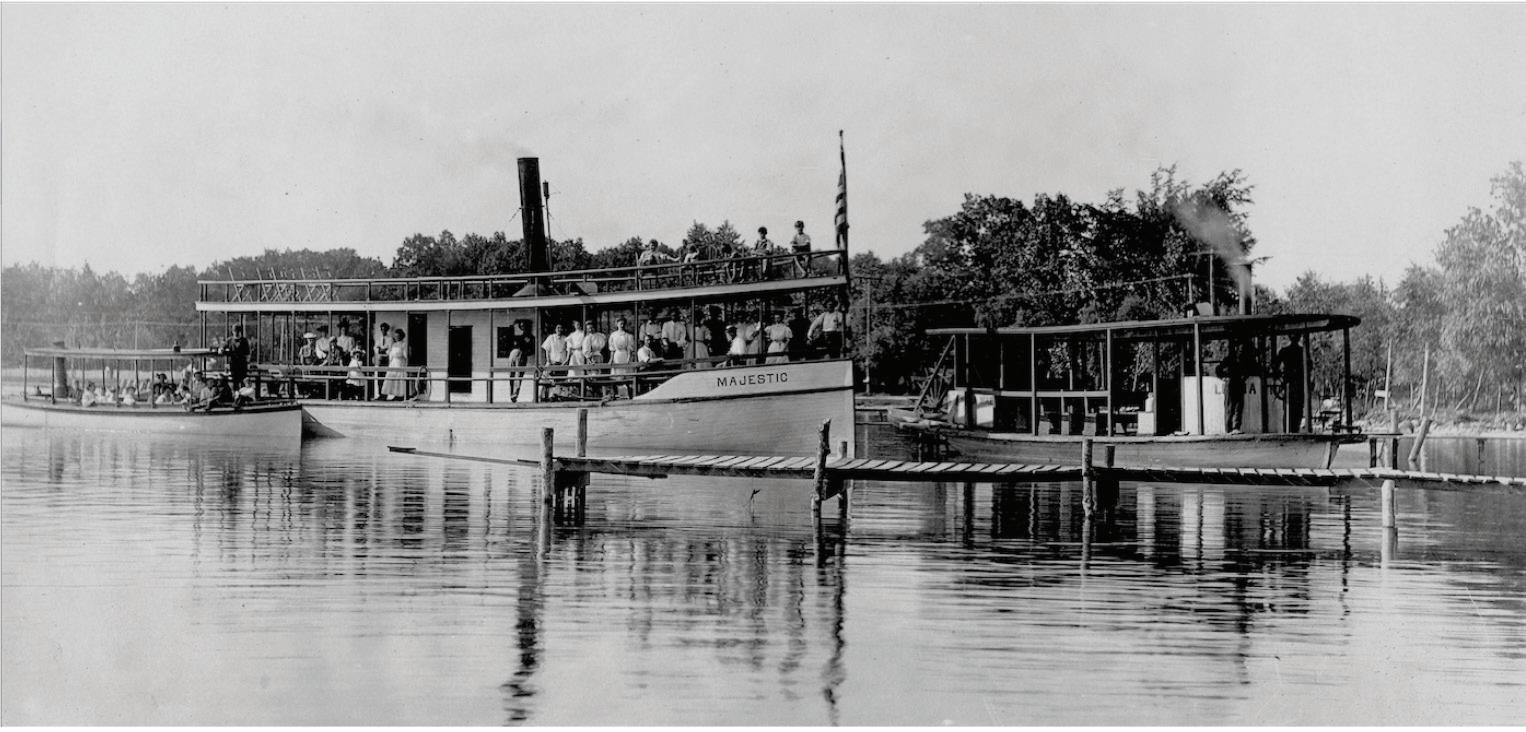
Few things have changed the face of Starke County more than floating dredges like the one shown in this photo. Before their arrival in the 1890’s, it was not unusual for much of Starke County to sometimes be under water. The higher sand hills took on such names as White Woman’s Island, Grape Island and Jackson Island. Early settlers talked of rowing boats from places like Brems and Hamlet to Knox. Winter actually made getting around easier, because the settlers could walk or skate on the ice.
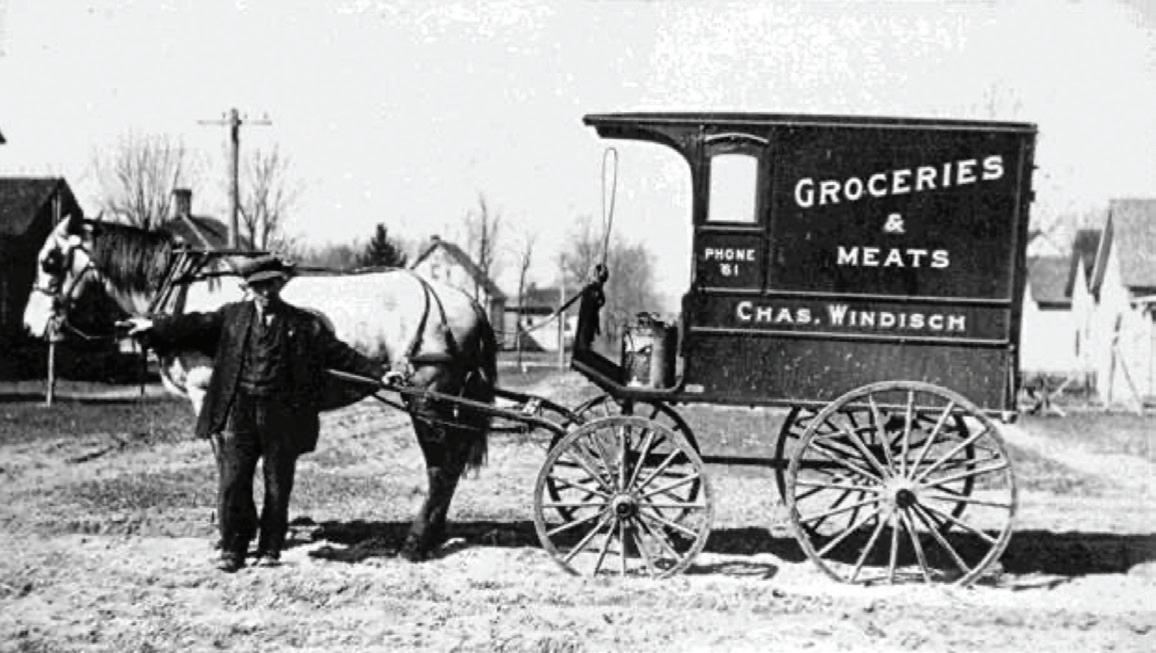



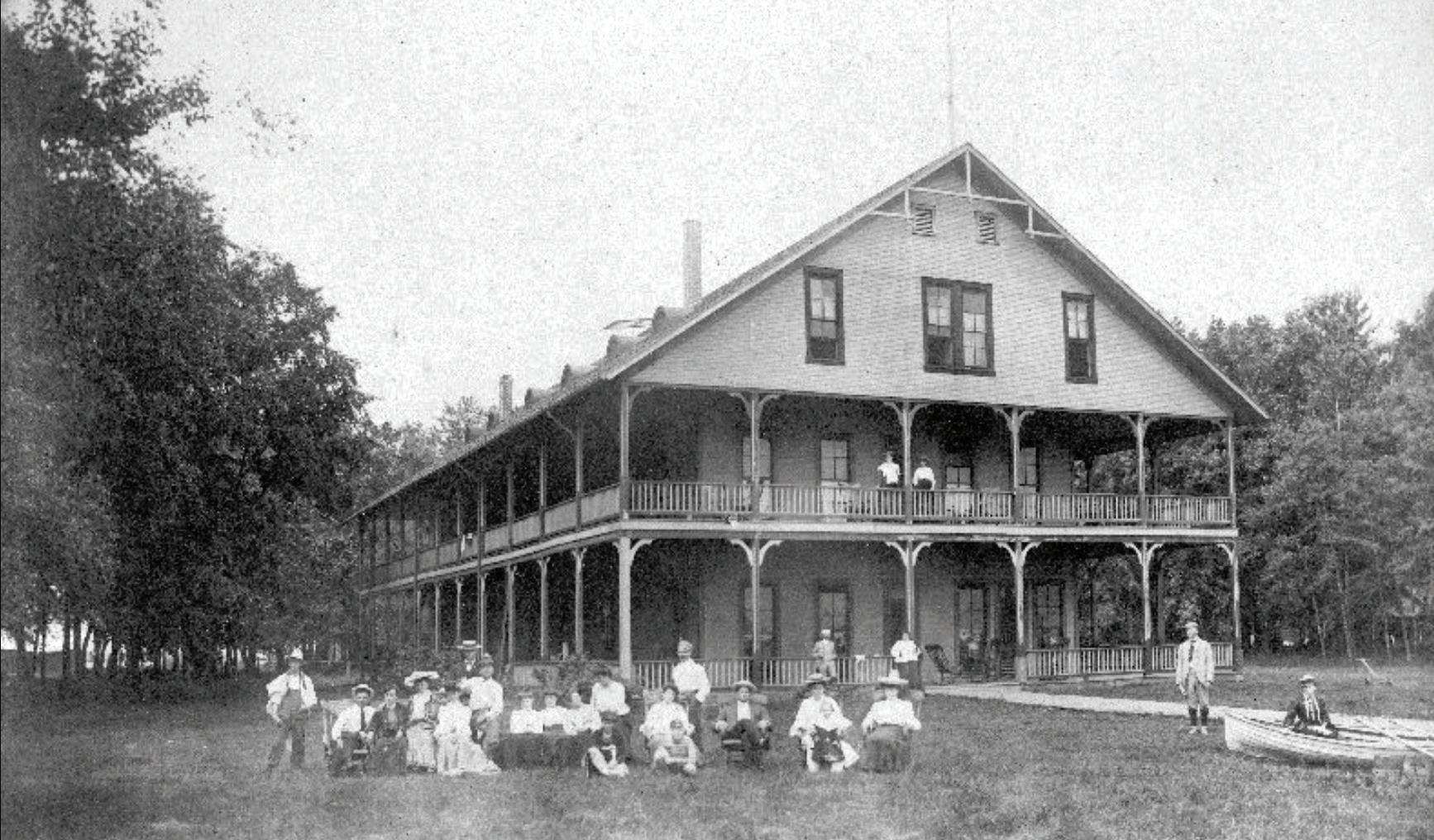
In 1891, August White sold 148 acres of mostly swampy farmland along the west side of Cedar Lake (later to be renamed Bass Lake) to Joseph H. Larimer for $2,600. This probably seemed like a good deal, since Mr. White had bought this same land 13 years earlier for $450. At that time there was no road at all running along the west side of the lake.
Mr. Larimer built a first-class hotel directly on Cedar Point. An advertisement says it has 512 feet of veranda facing the lake on three fronts. It also says “The mineral waters, containing iron, sulphur, and other medical properties, are healthful and unsurpassed by any in Indiana making Cedar Point not only the prettiest and most enjoyable resort for pleasure, but a health resort, and persons who have used the water from the mineral well on Cedar Point have been much benefited thereby.”
By 1905, the hotel had been sold to William Brabrook, who renamed the hotel and advertised first-class cuisine and rooms for $8 to $12 per week.
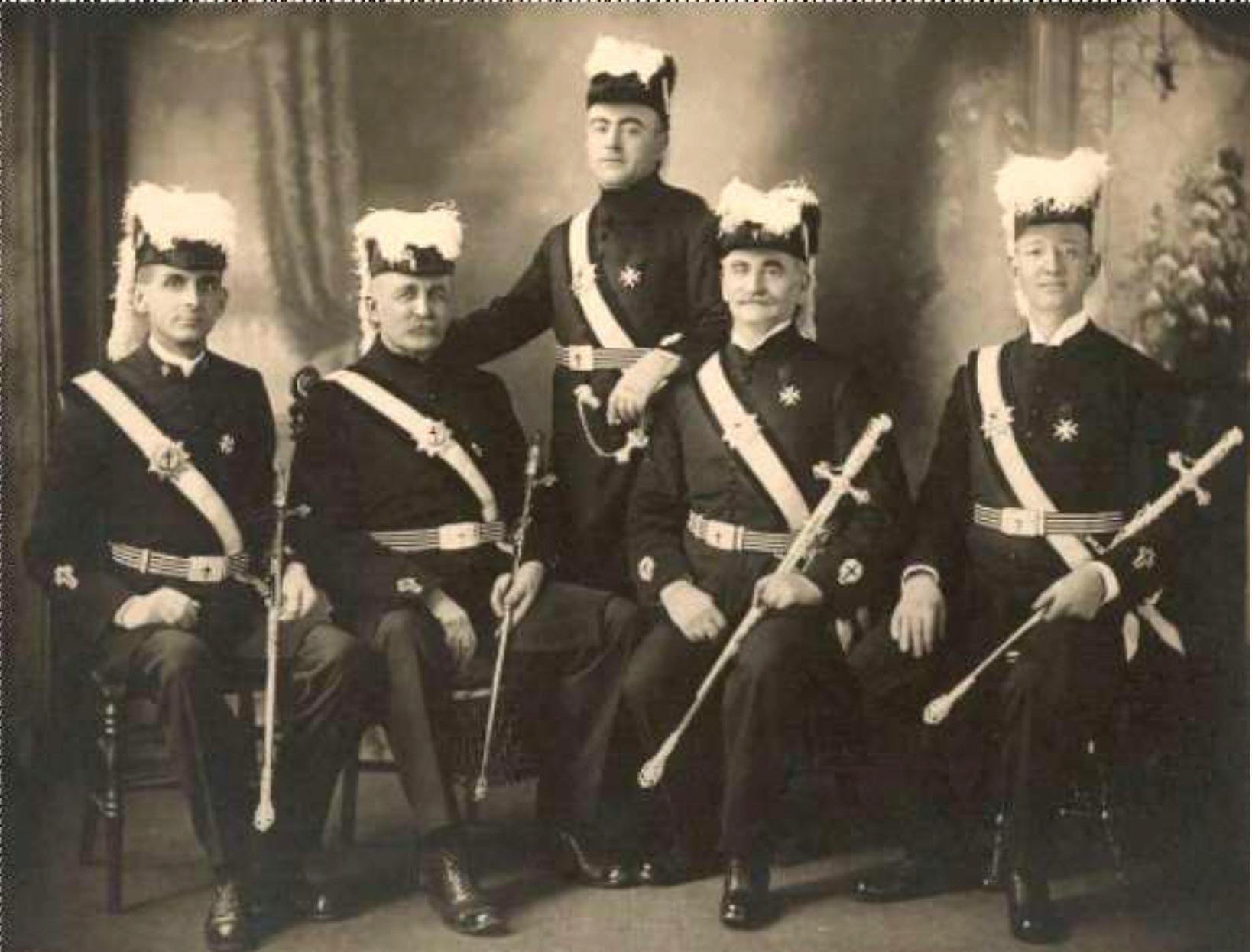
This photo of the officers of the Knights of Pythias organization in Knox is dated 1905. The Knights of Pythias was founded in 1864 during the Civil War. The organization, which is still active in some communities, is dedicated to universal peace and was founded on the principles of “”Friendship, Charity and Benevolence””.
The Knox order was founded sometime before 1898, as a photo is on file of their 18 member orchestra in that same year.
From left to right: John Jones, Monroe McCormick, Glen Peters, Charles Peters and Frank Green. John Jones was a local businessman and secretary of the Crown Hill Cemetery Association. Monroe McCormick was one of the organizers of the First National Bank of Knox and the Bank of Starke County in Hamlet. Glen Peters and his father, Charles Peters were attorneys in Knox. Frank Green owned and operated Green’s Drug Store in downtown Knox.


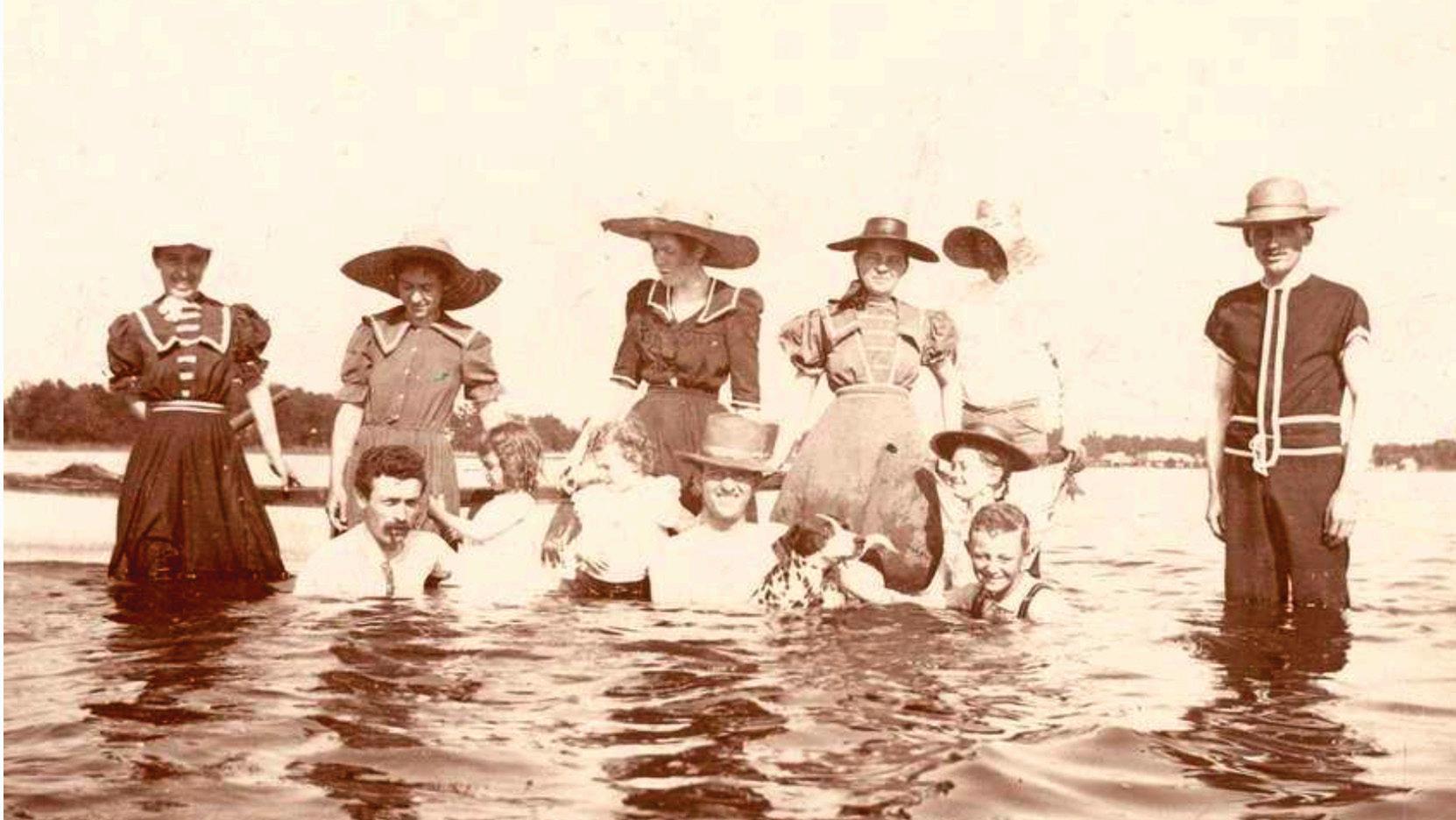
This photo is of a group of bathers at Bass Lake around 1905. They are unidentified, but many out-of-town visitors came to the lake on one of the railroads from Chicago.
The ladies are wearing fashionable bathing suits of the day. This consisted of a blouse and pants all in one piece, with a matching skirt buttoned at the waist to conceal the figure. A pair of stockings completed the outfit.
The lady in the center is wearing a very daring outfit, since it exposes her neck. As late as 1910, a lady might be arrested for exposing her lower legs, upper arms, or neck. It would be the 1920’s before skirts and long pants were not worn when swimming. At the time of this picture, it was just becoming widely acceptable for women to go swimming. It would be 1930 before men dared to expose their chests at the beach.
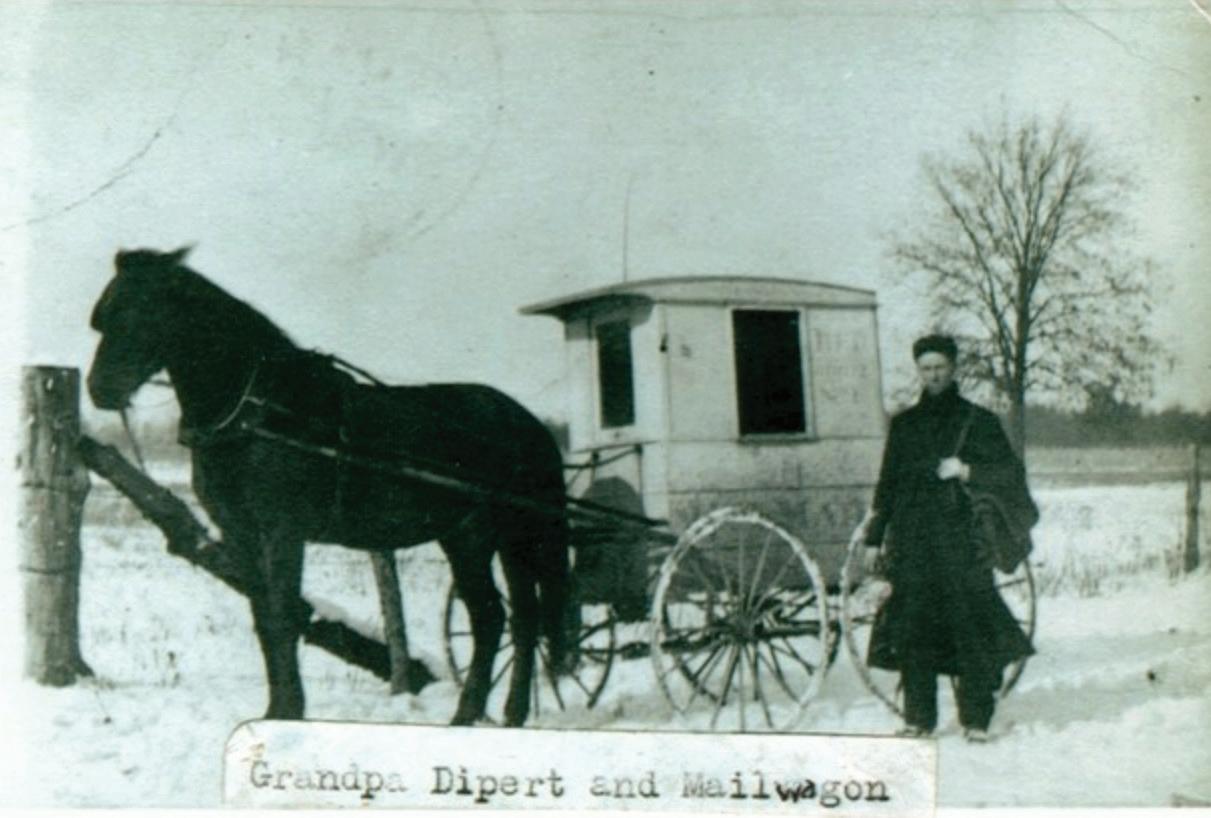
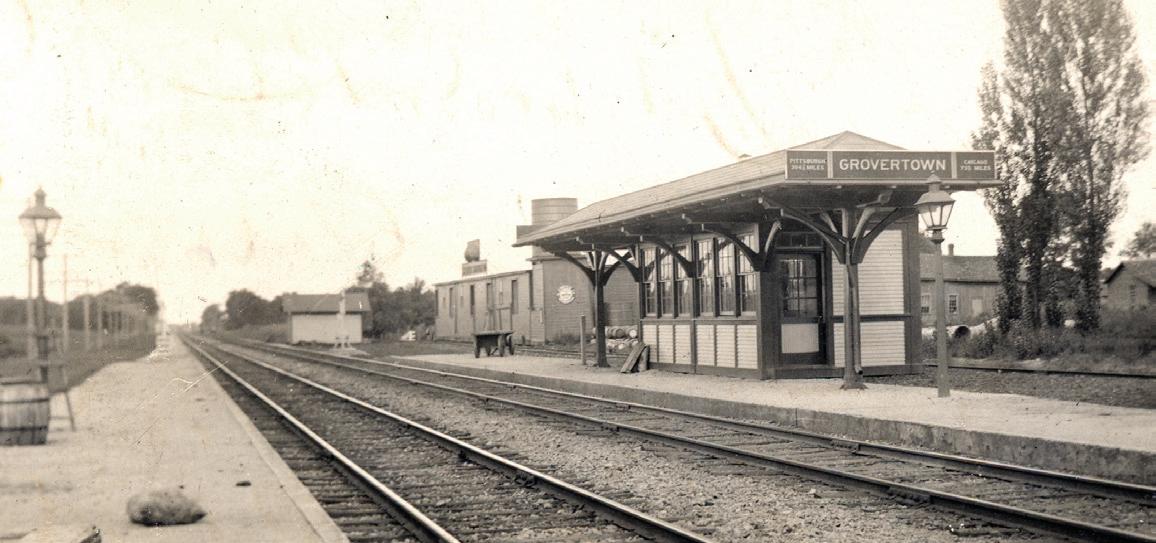
This historic railroad photo shows the Pennsylvania RR depot in Grovertown around 1910. This railroad was originally built as the Pittsburgh, Fort Wayne and Chicago Railroad in 1856 through the northern part of Starke County. The Grovertown Depot was similar to other small depots built along its tracks, such as Davis Station, built where it crossed the Kankakee River on the west side of the county.
RR was the second line built through Starke County and in 1858 finally connected Chicago with Philadelphia. In those days, the 153 mile Indiana section was known as the “race track” because it was very straight and level. By World War I, the track carried 26 passenger trains daily. By the end of


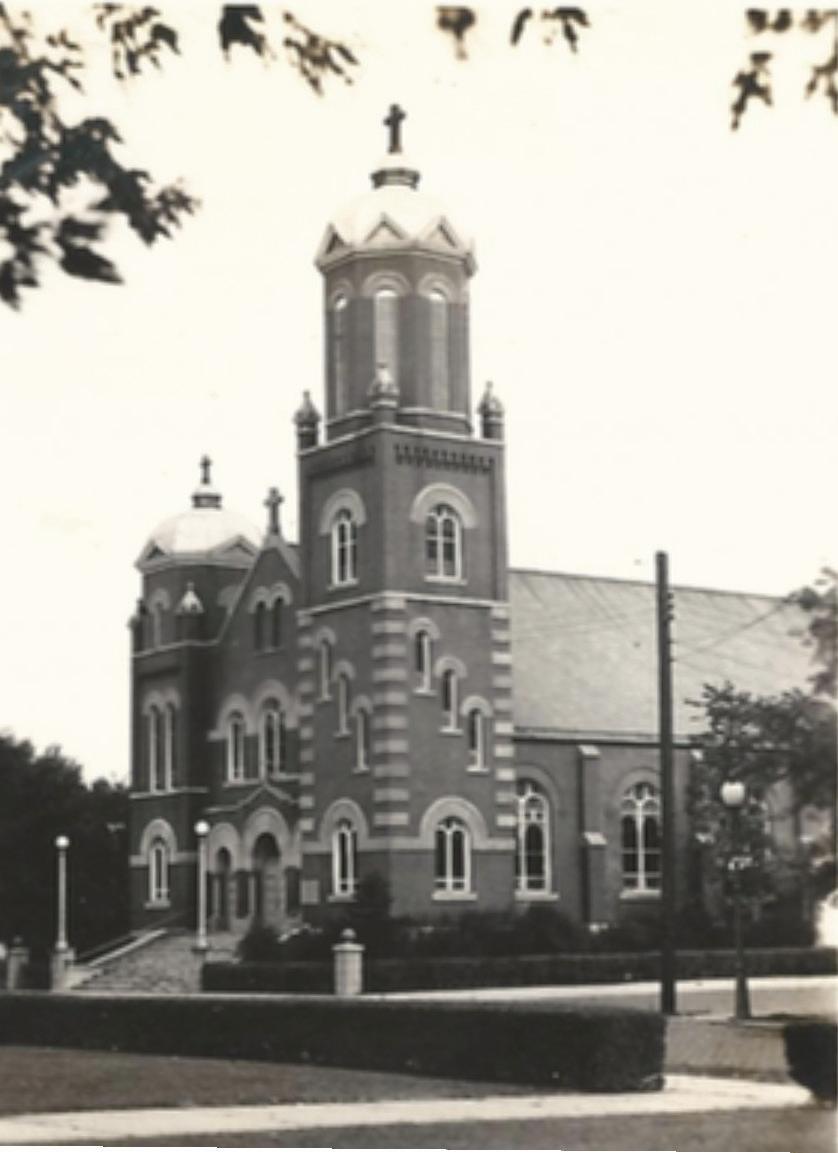
The Catholic parish at North Judson was established in November, 1881. The site for the church was donated by Louis Keller and his brother Jacob. The frame structure, 30 feet wide by 35 feet long, was in approximately the same spot where the present church now stands. Within a few years, the parish was outgrowing this first church and looking to build something new and larger. By September, 1898 (possibly earlier) the parish was raising money for the new building.

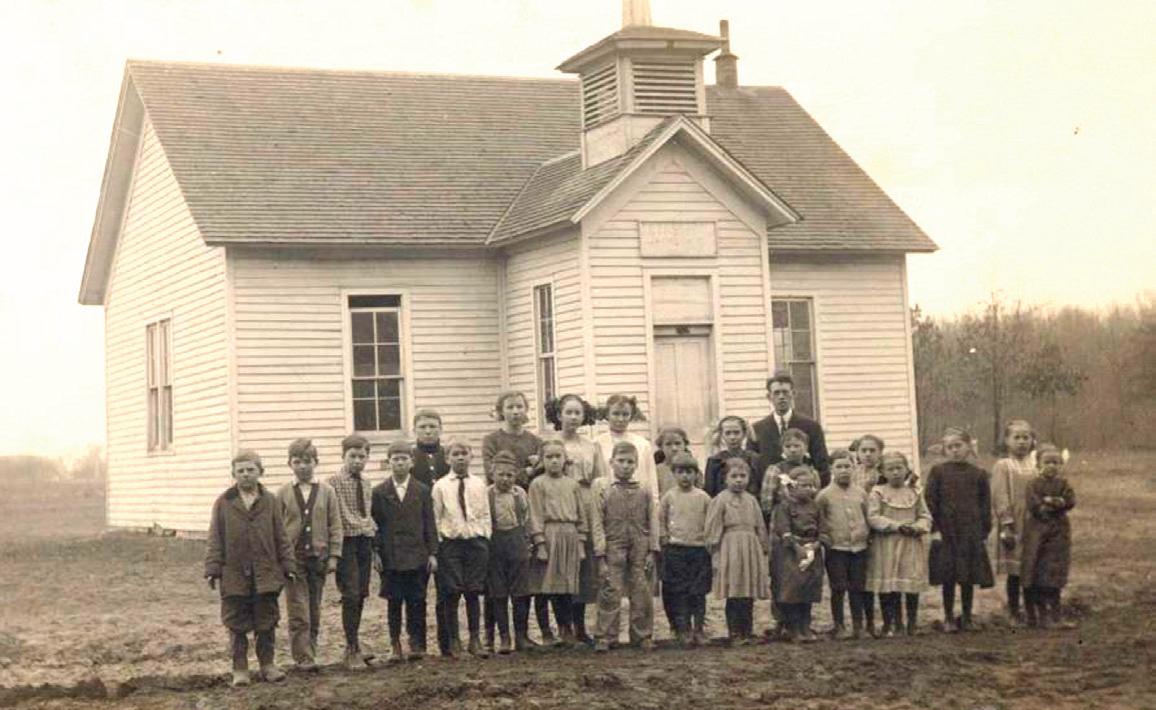
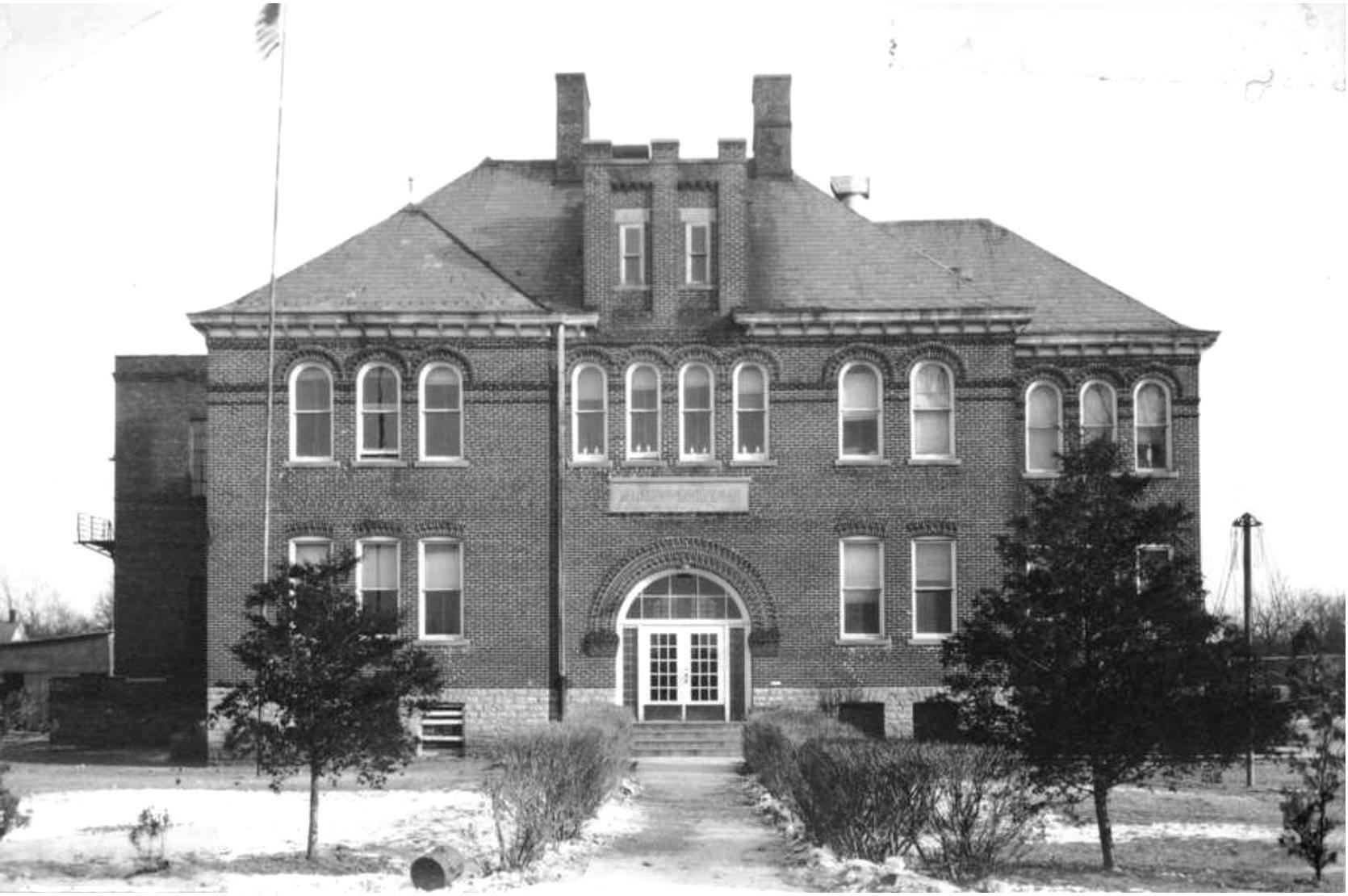
Center Twp School was built at the northwest corner of 50 S. and 300 E. in 1910. It replaced seven one-room schools (Jackson, German, Atkins, Bigler, Harden, Klein and Nickel Plate) in Center Twp. Note the school hacks which have brought students from around the township.
The high school opened on December 5, 1910. This photo would be from around the time the school was built. The building would burn down on January 9, 1942. Following that, the students merged into the Knox school system.
